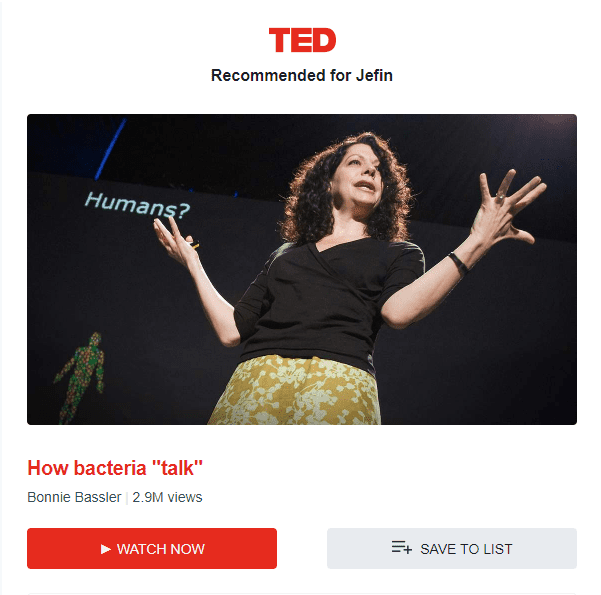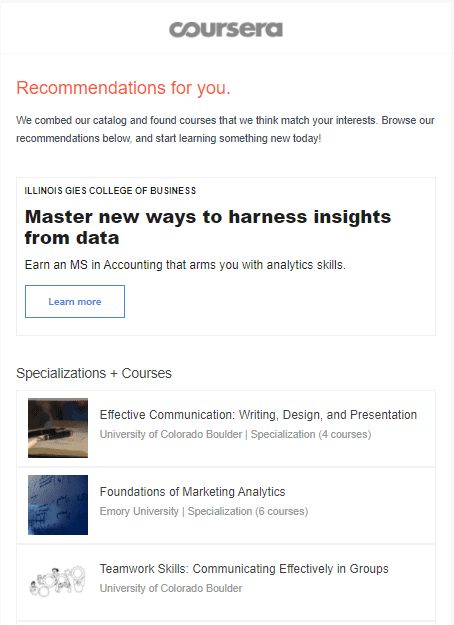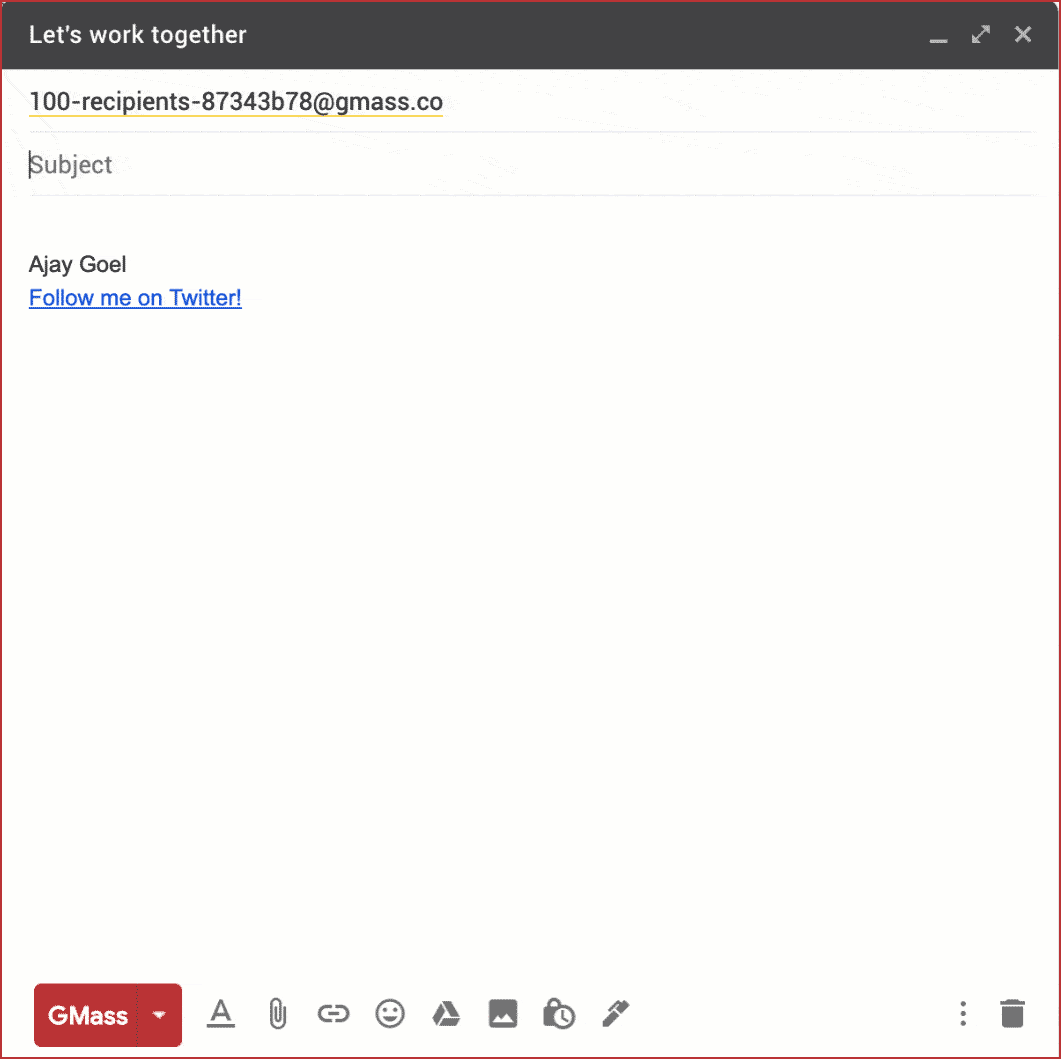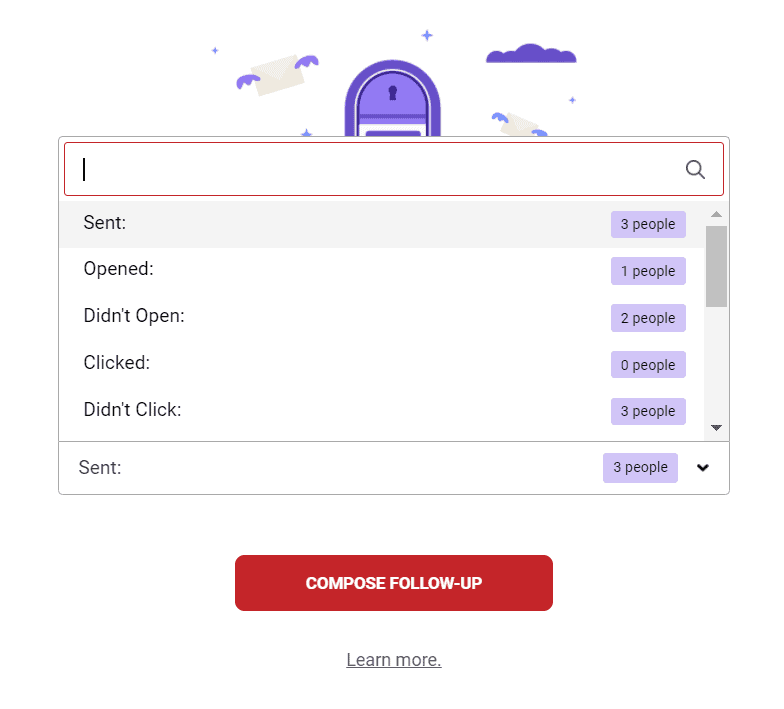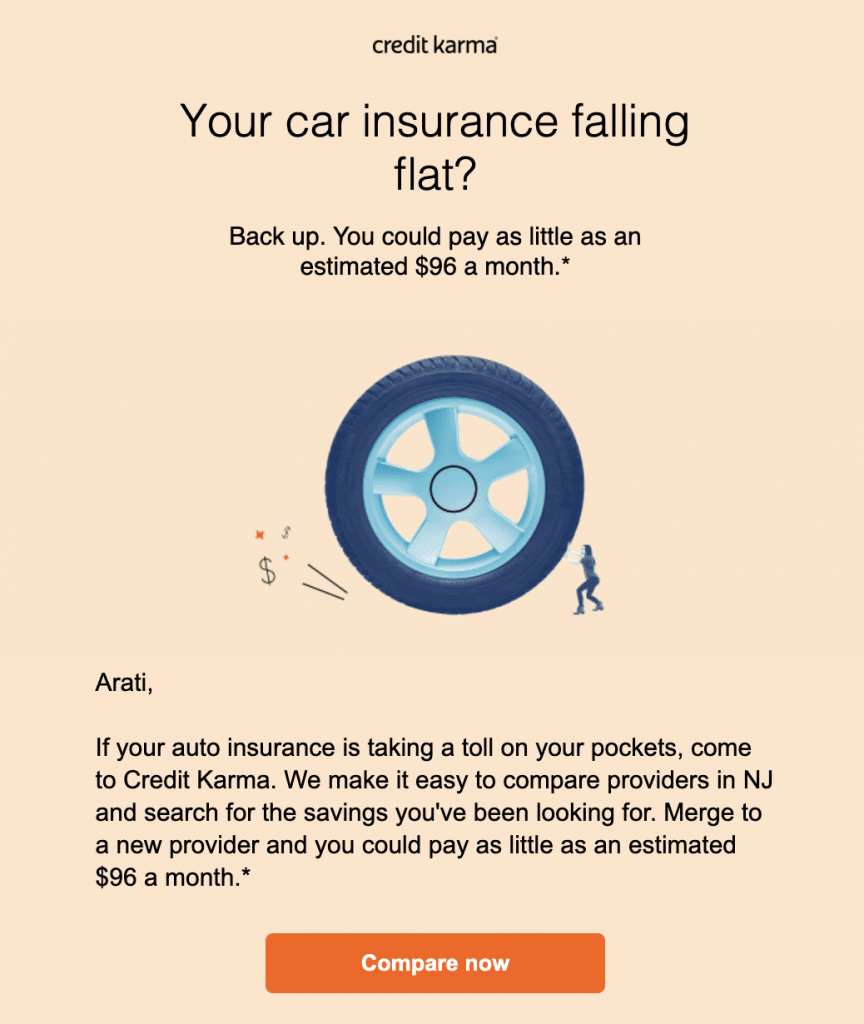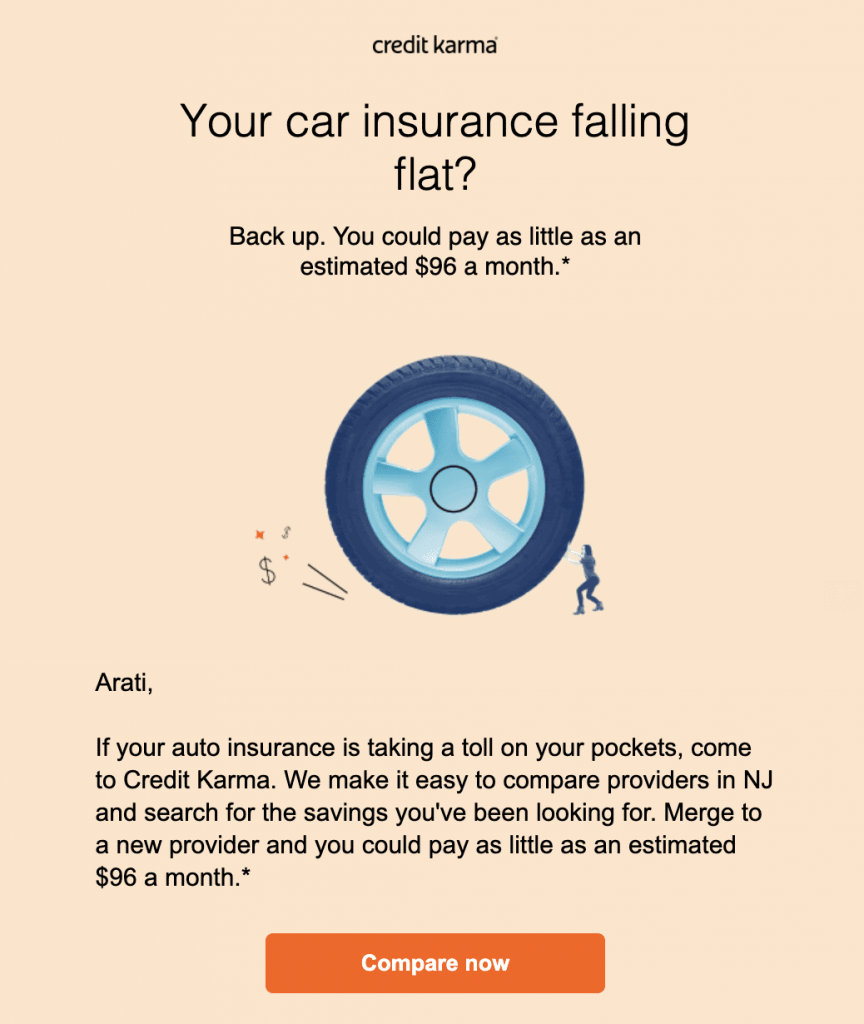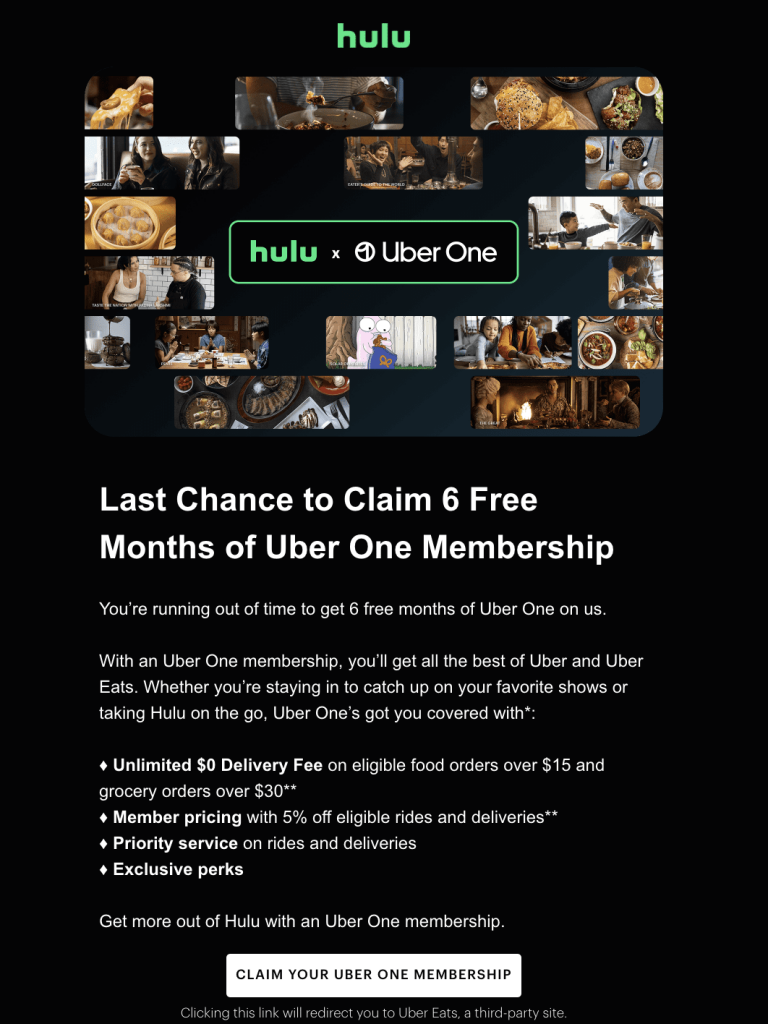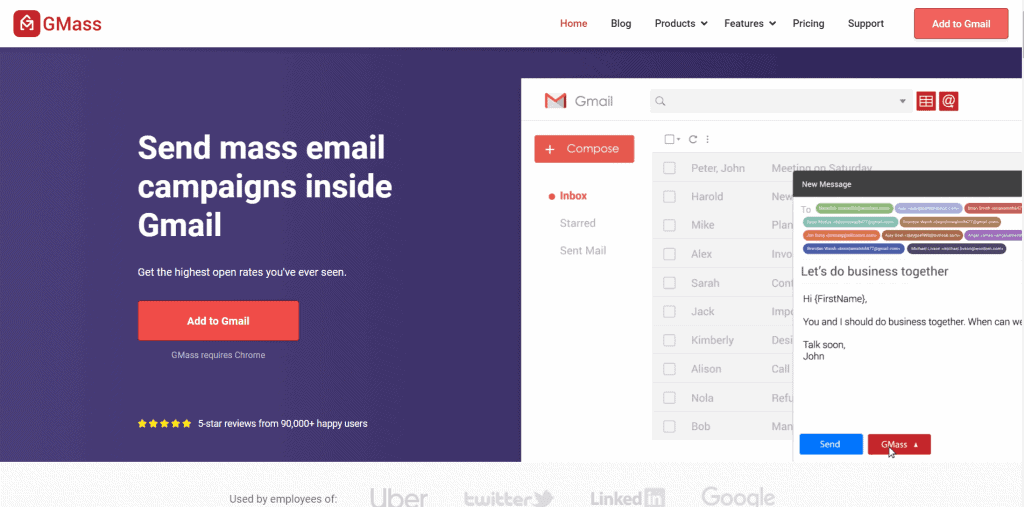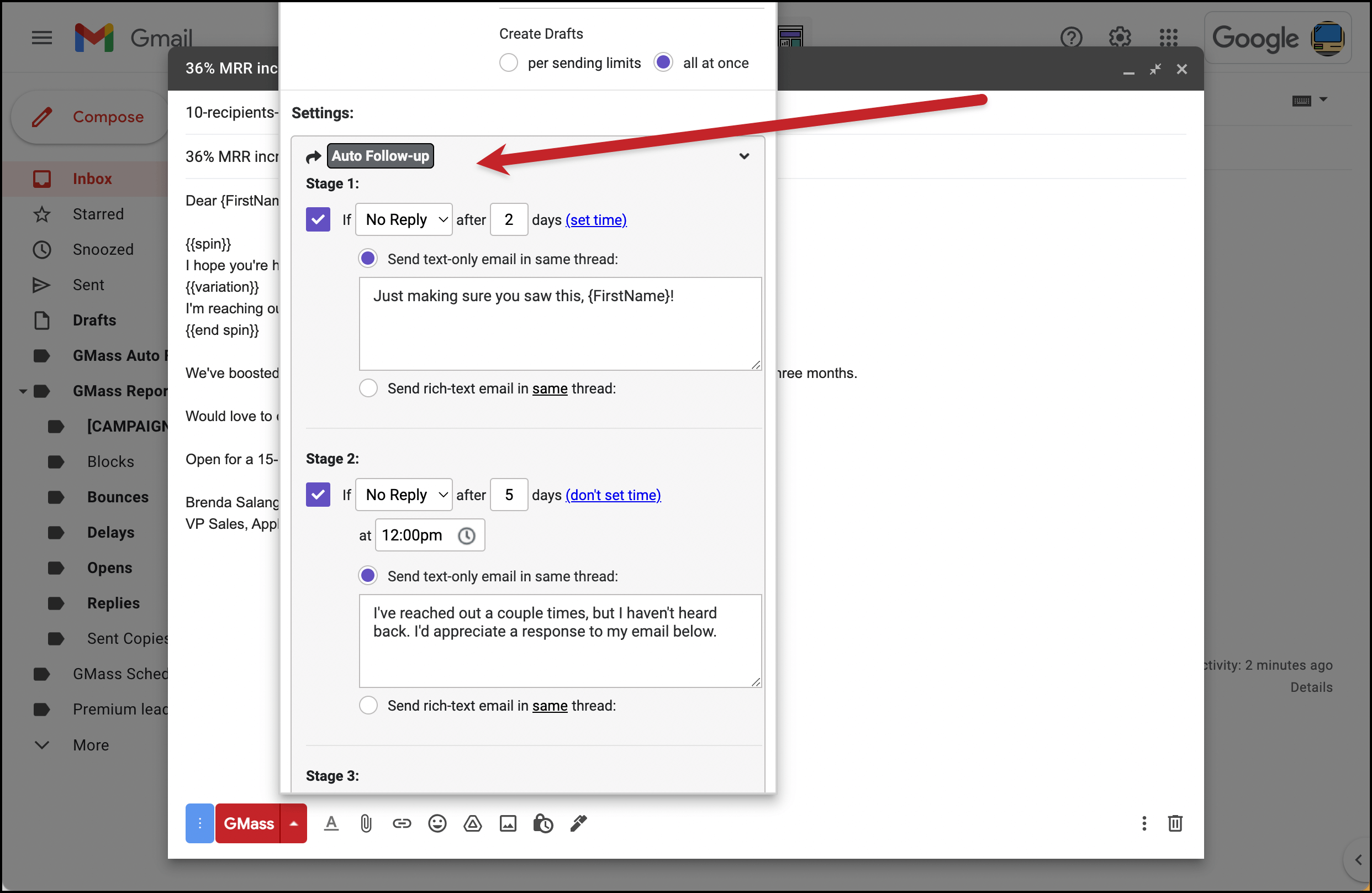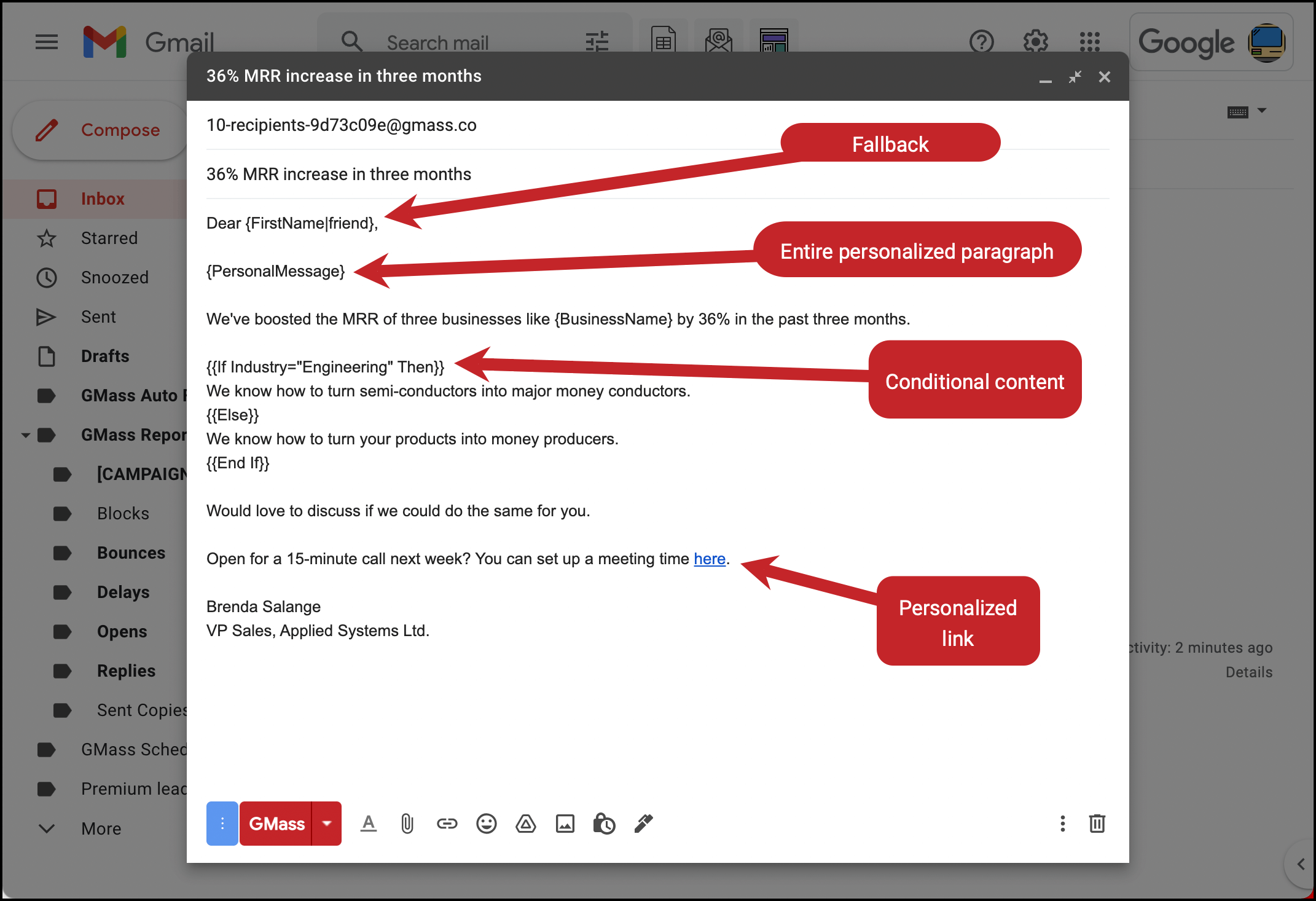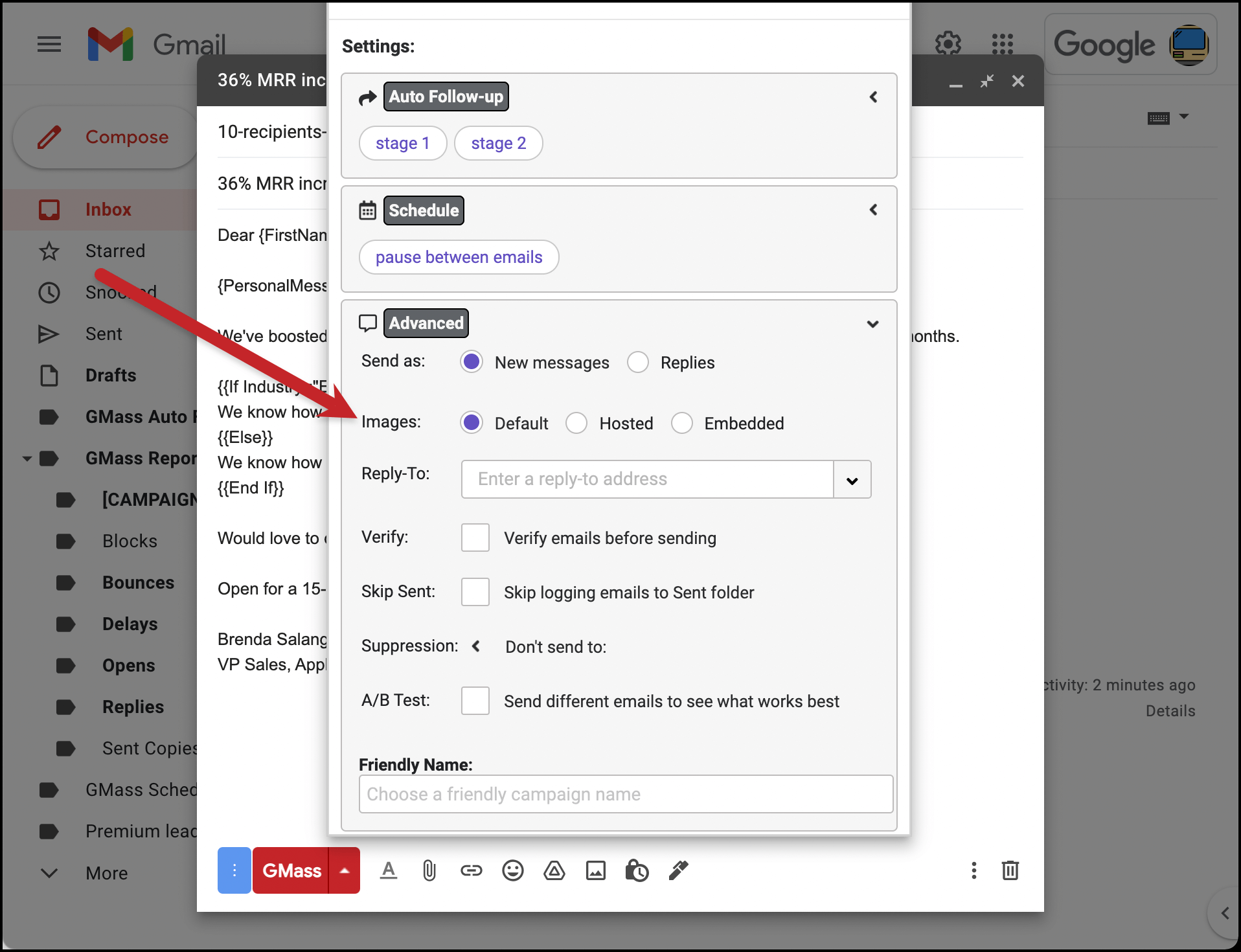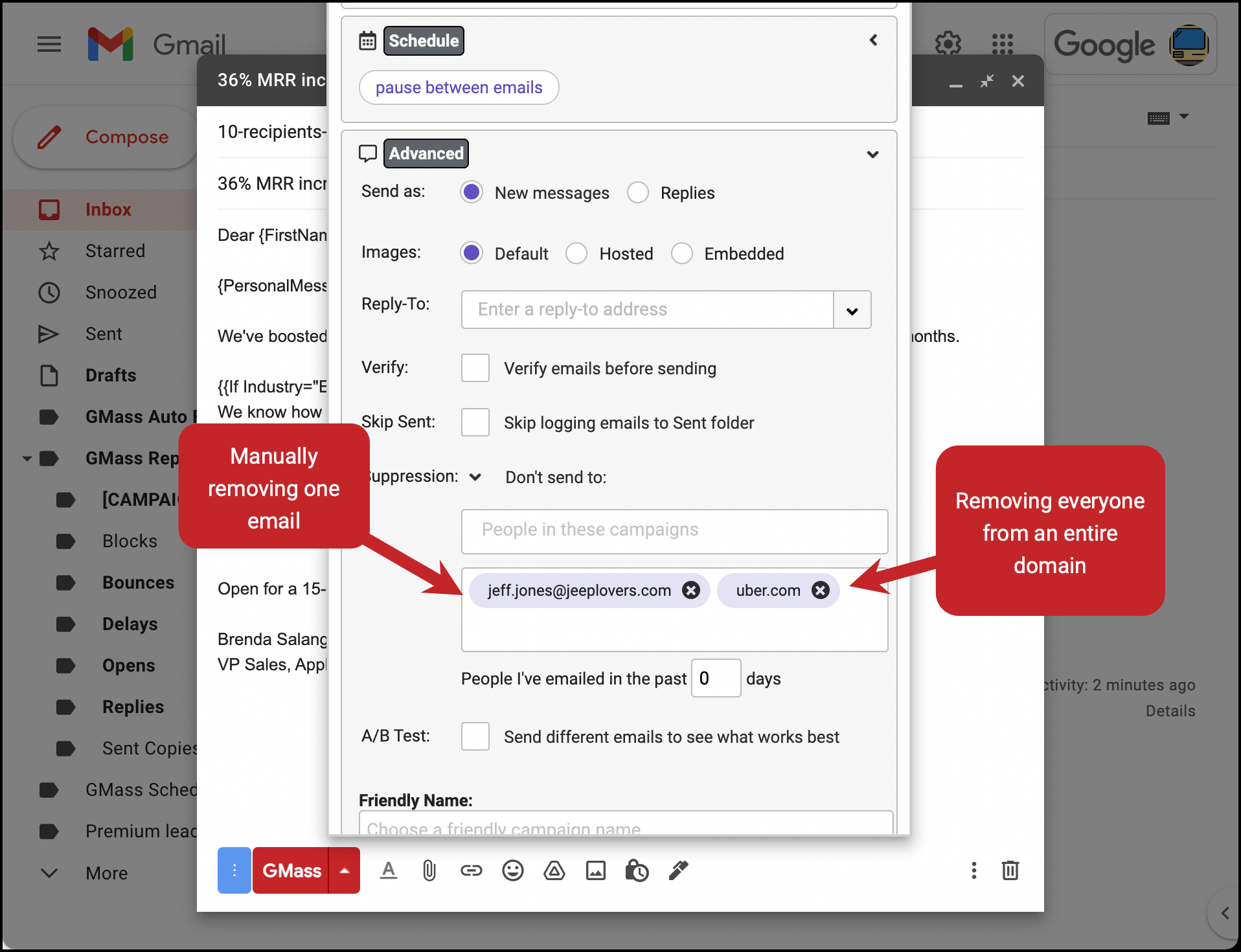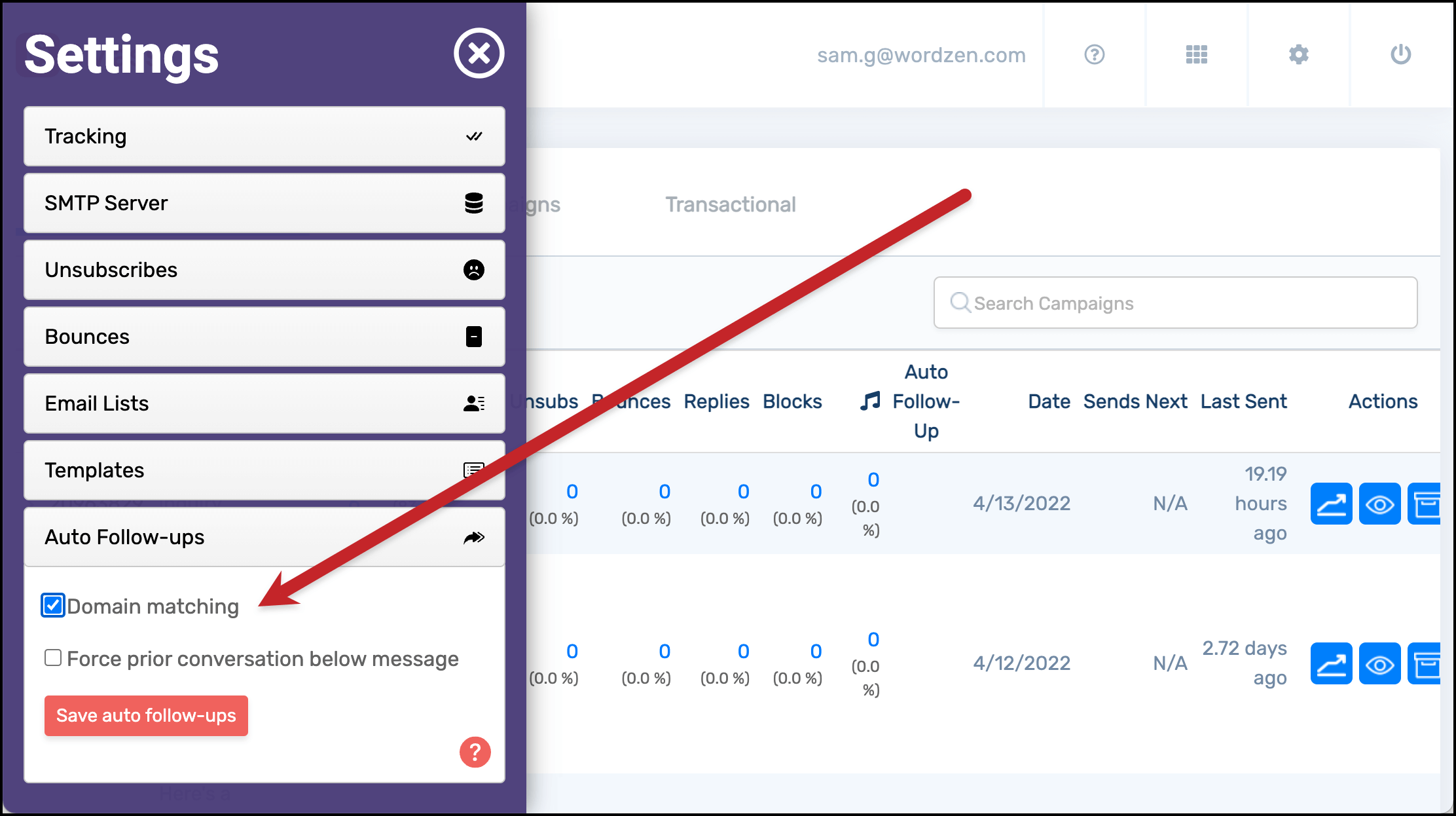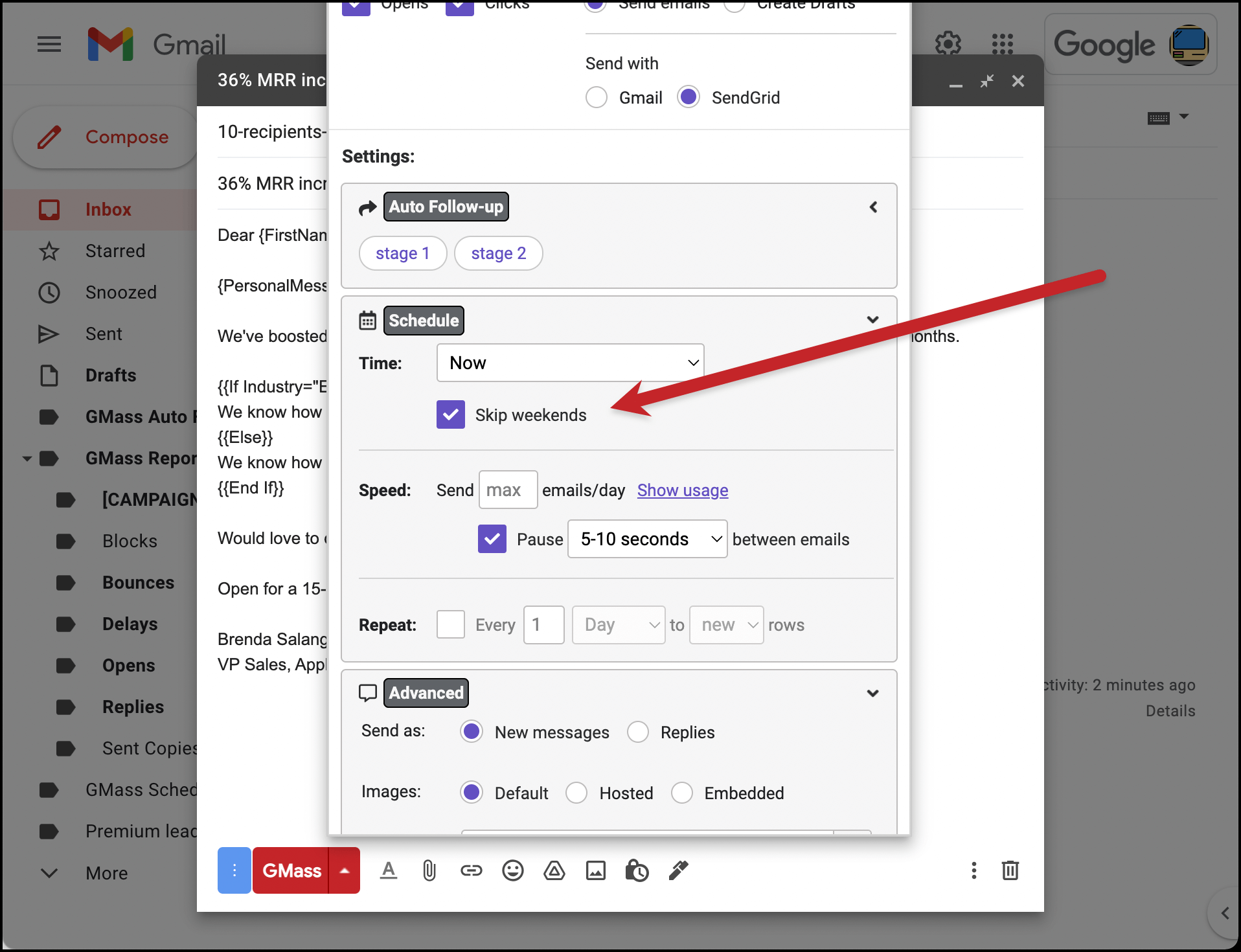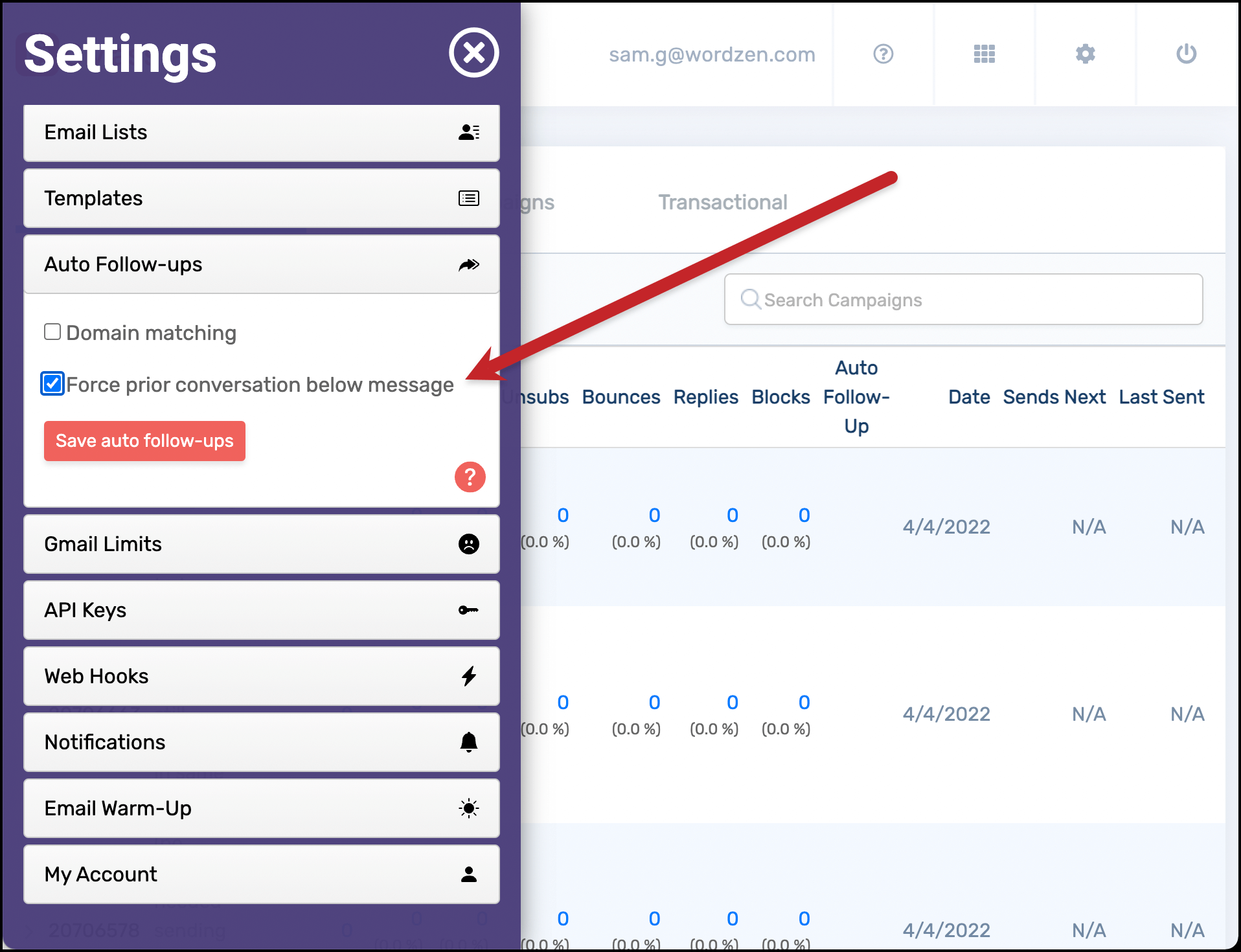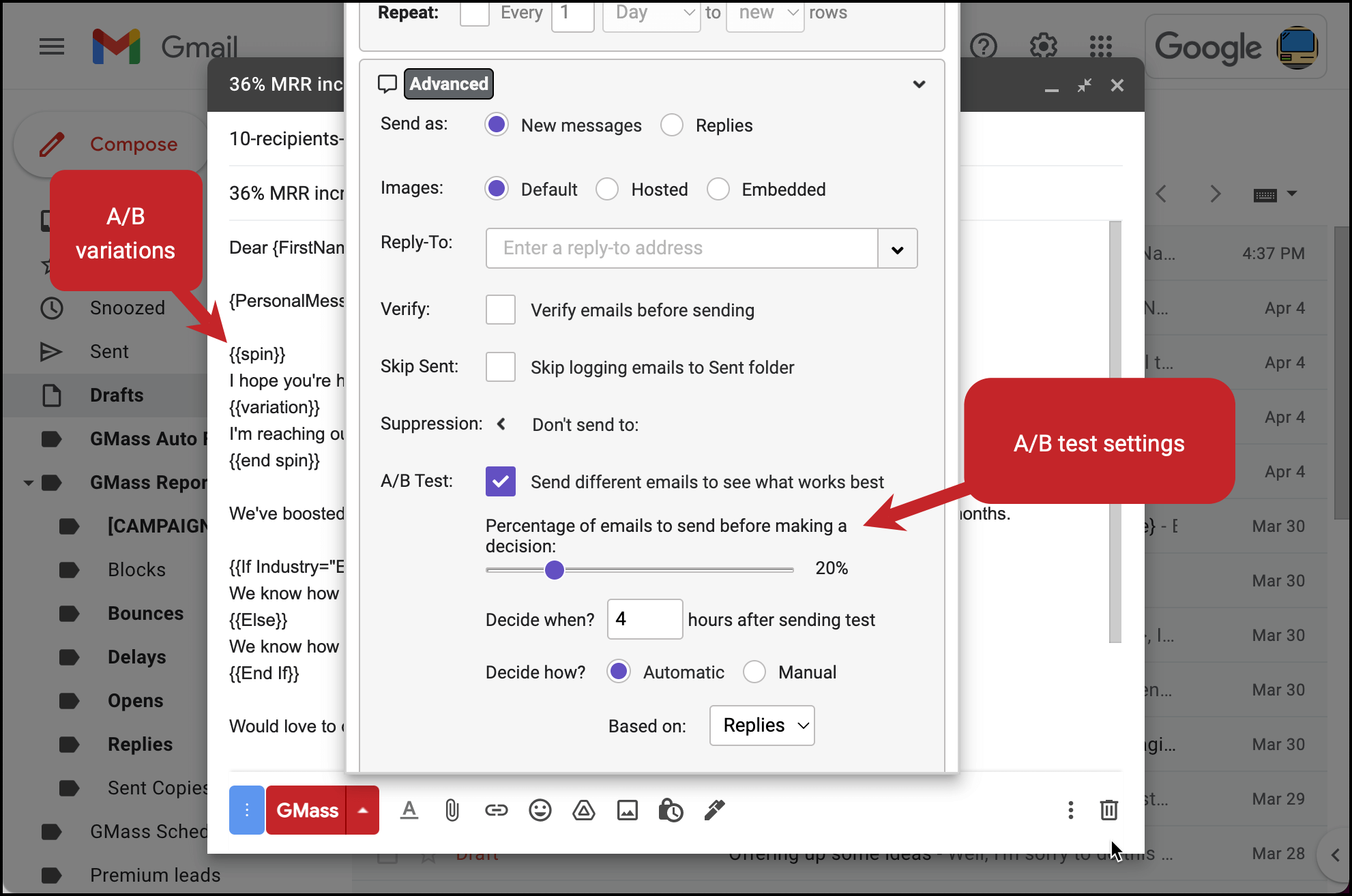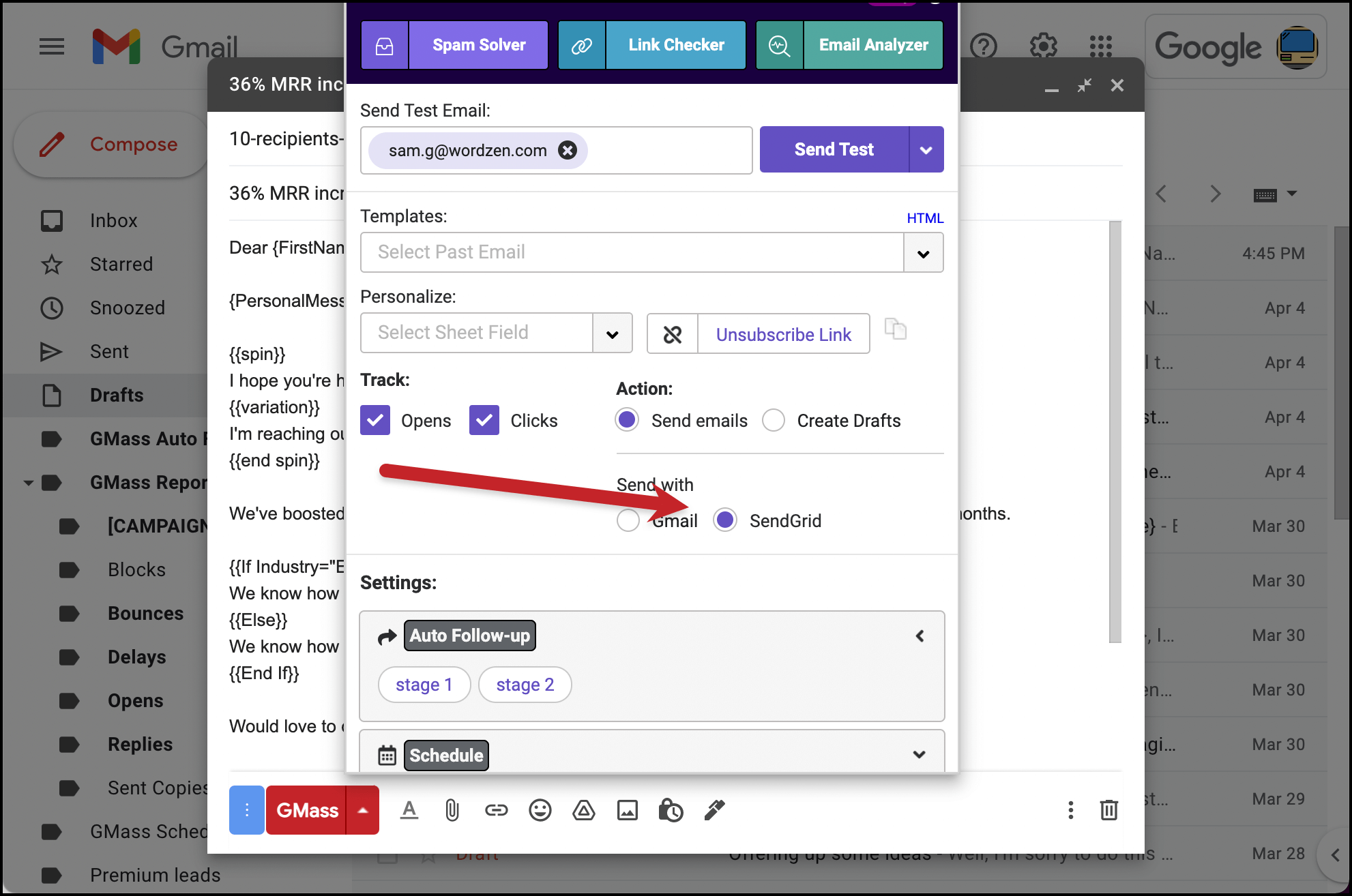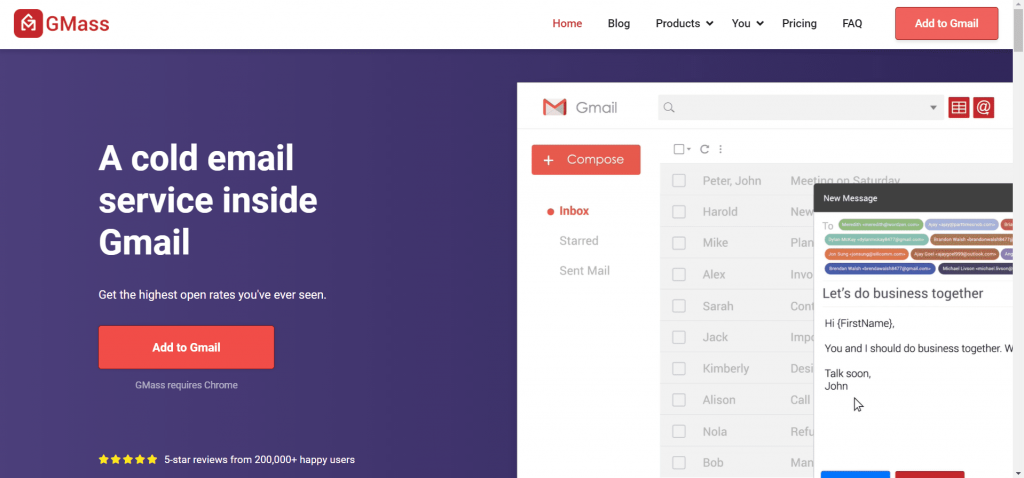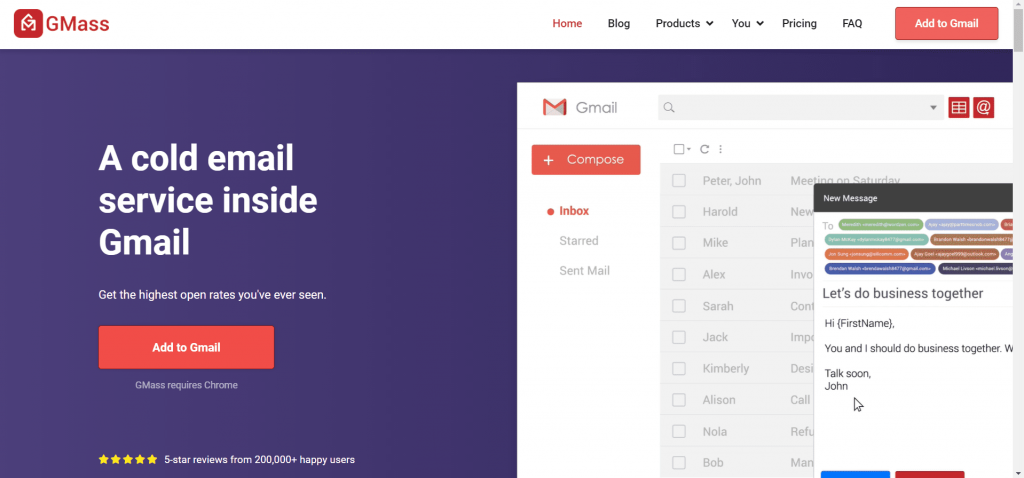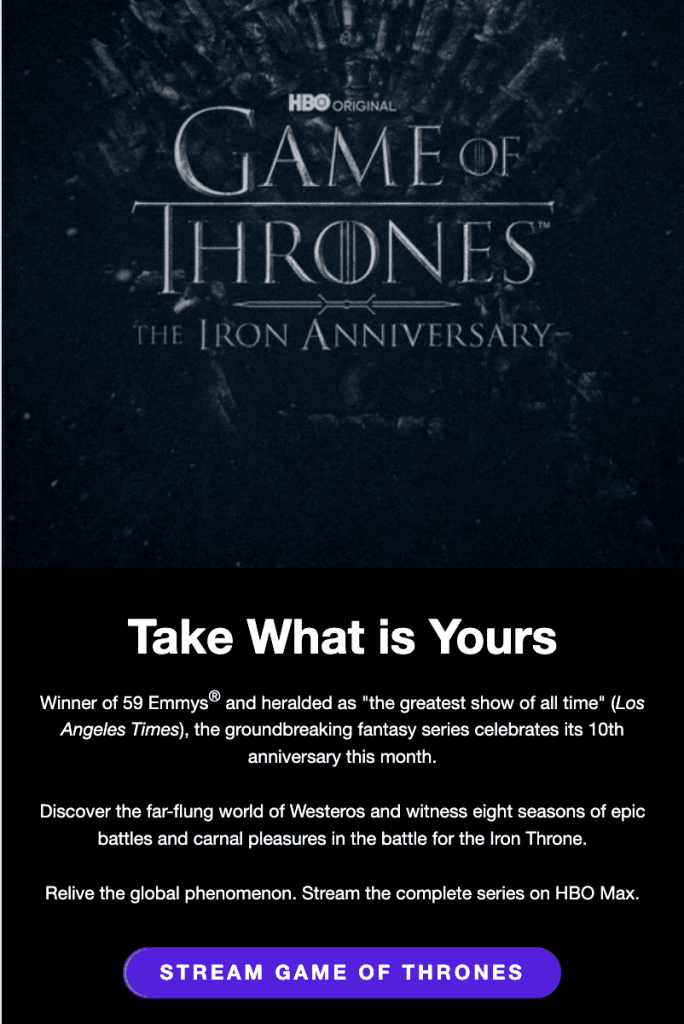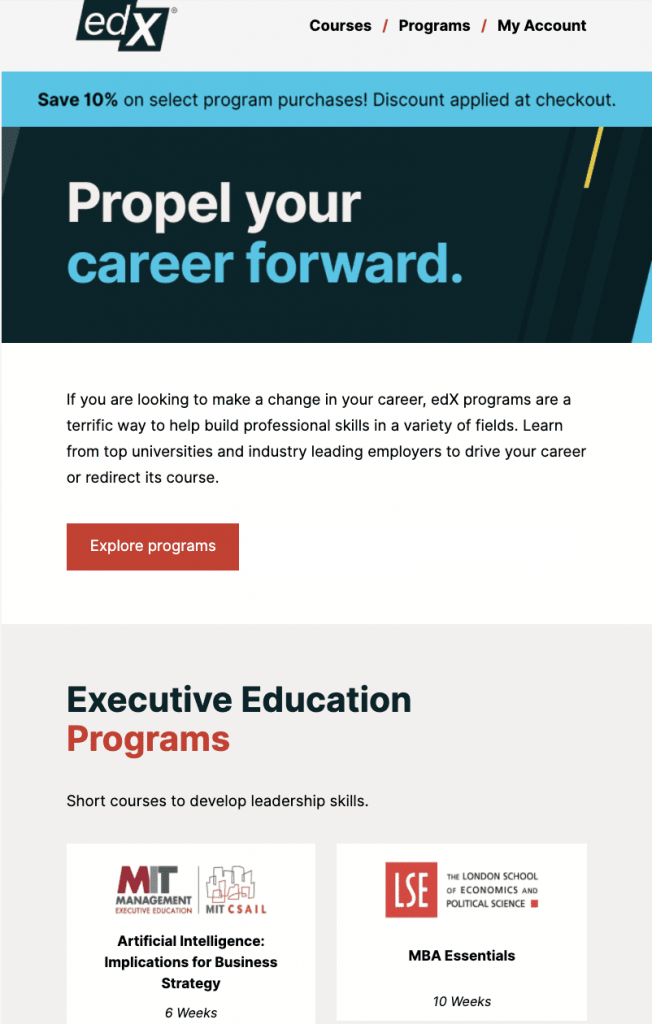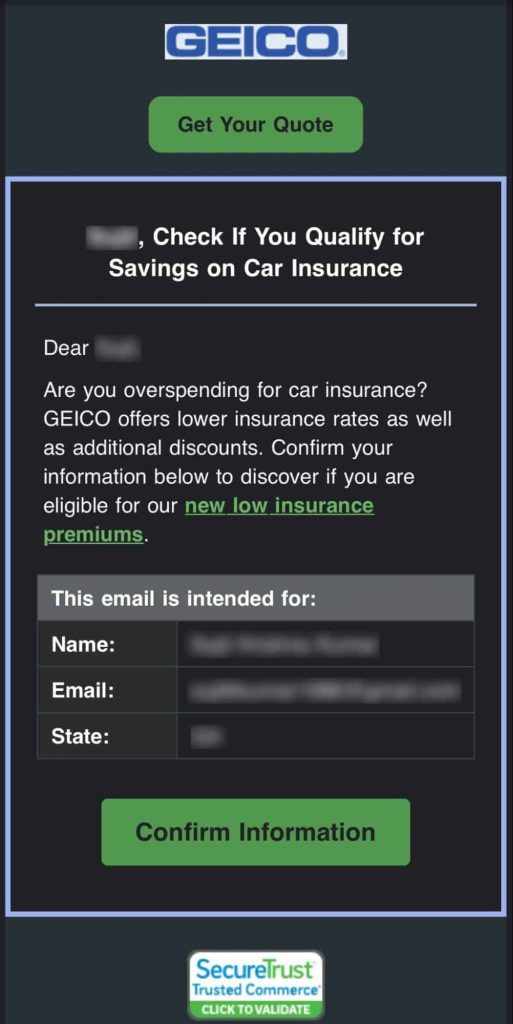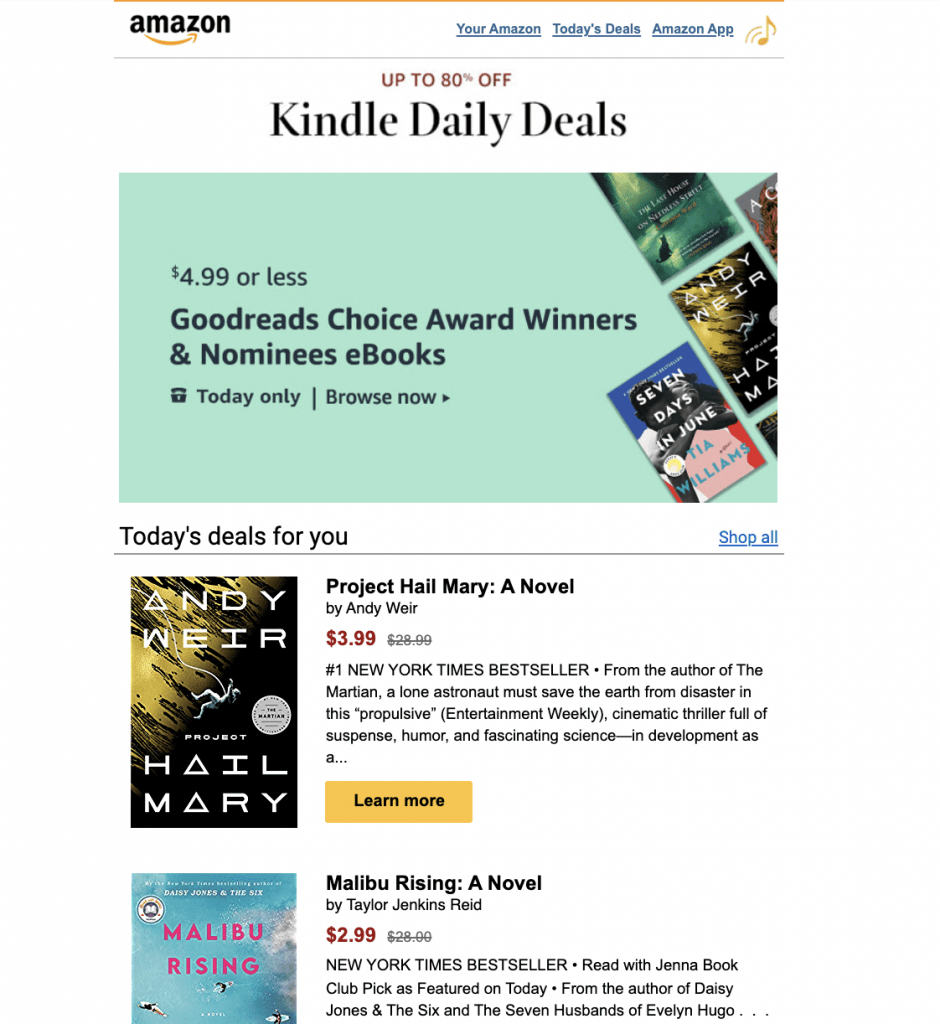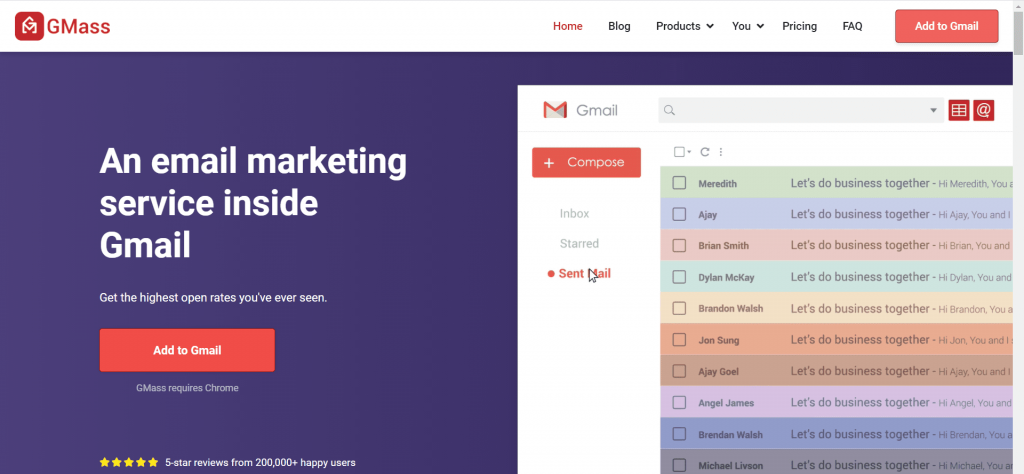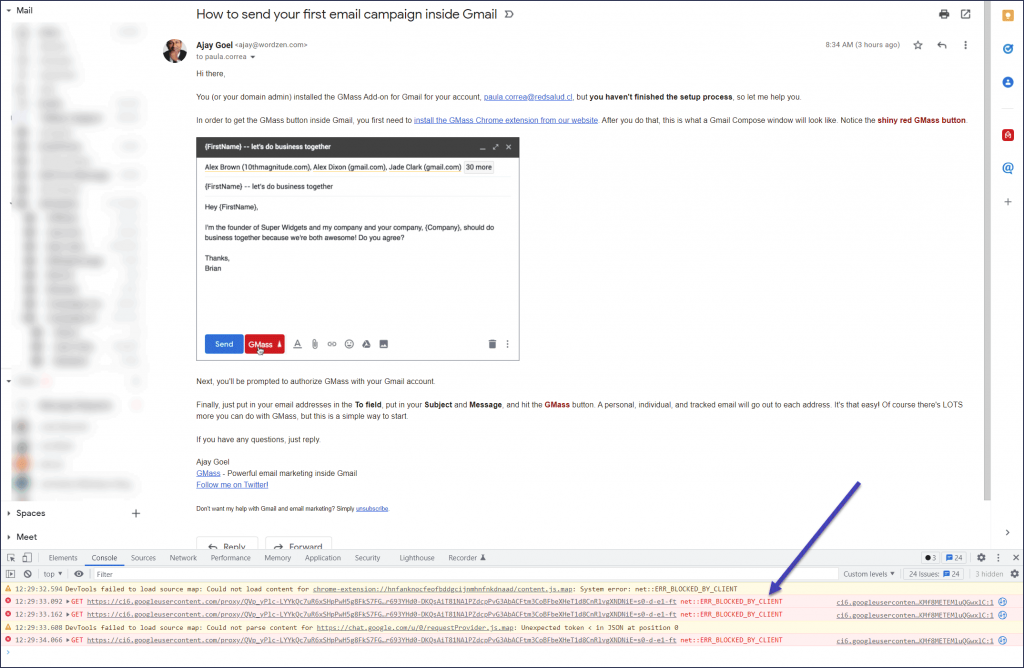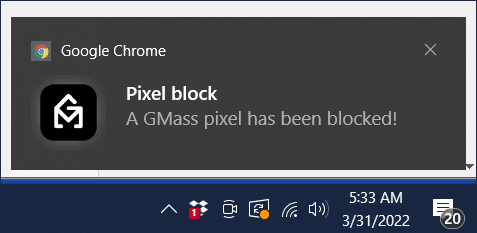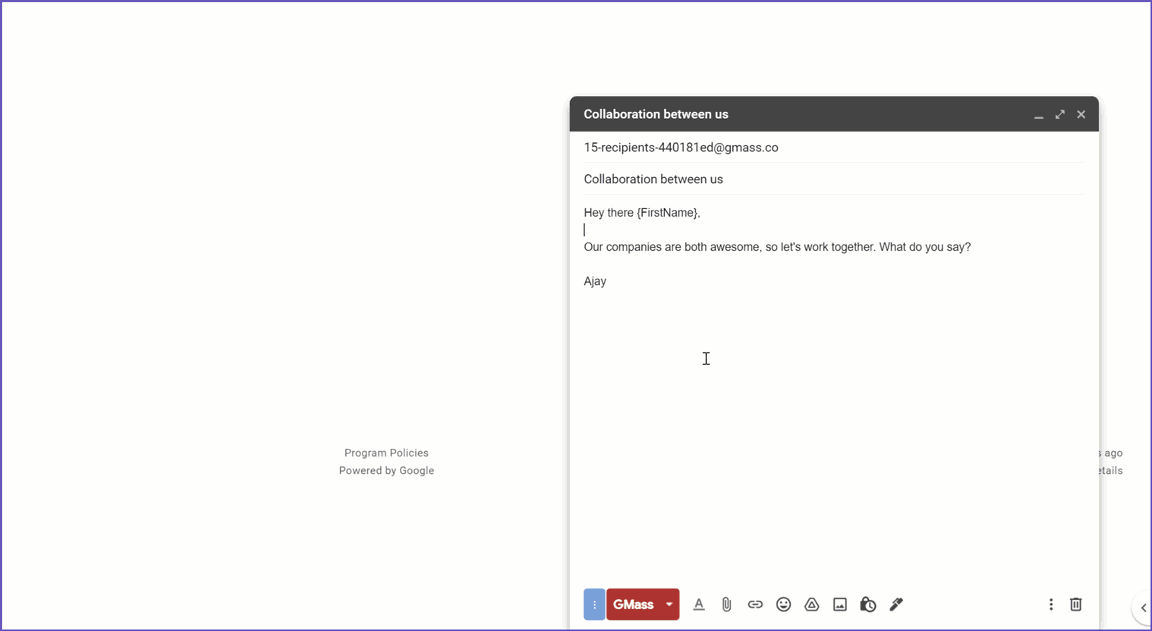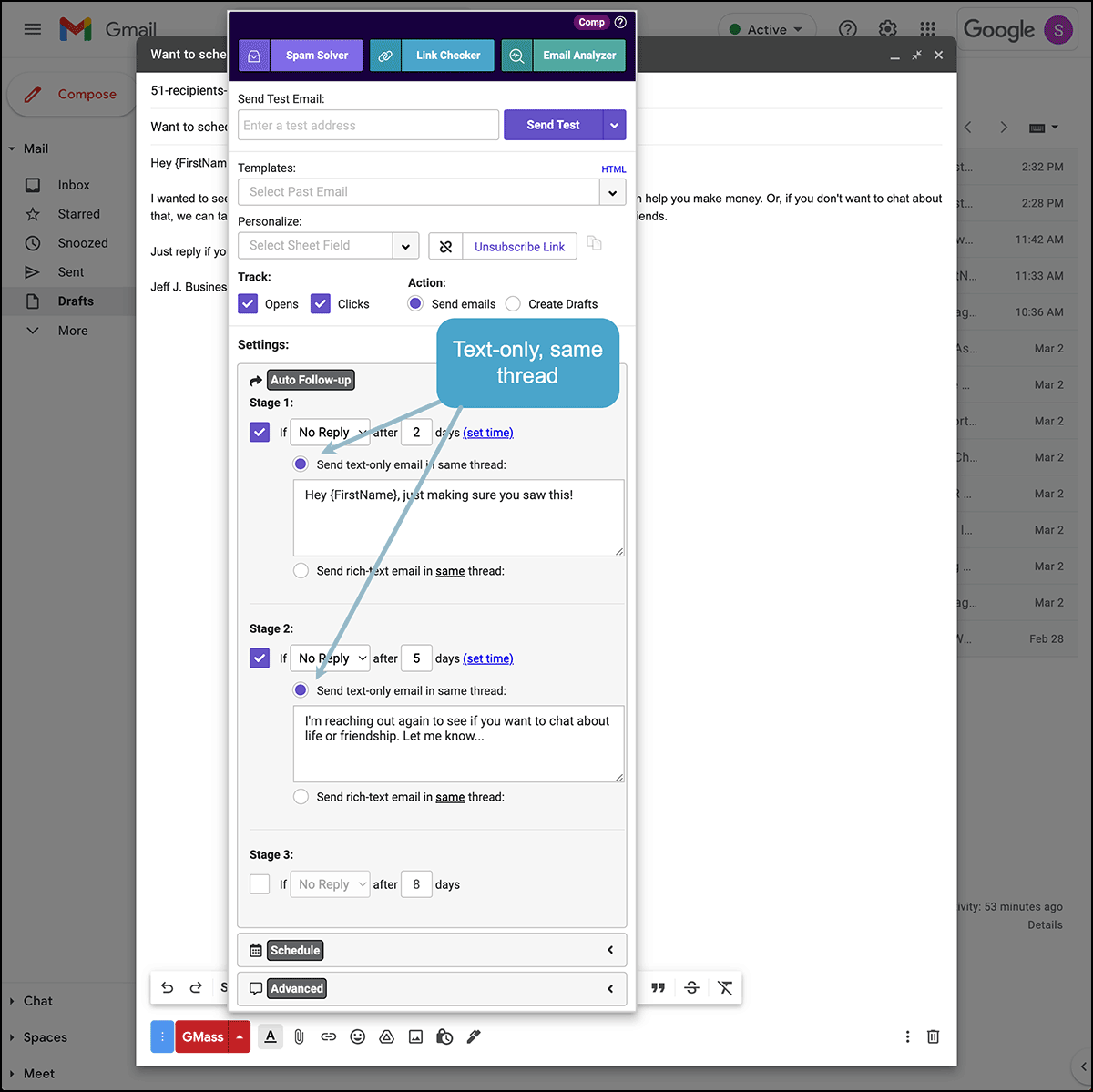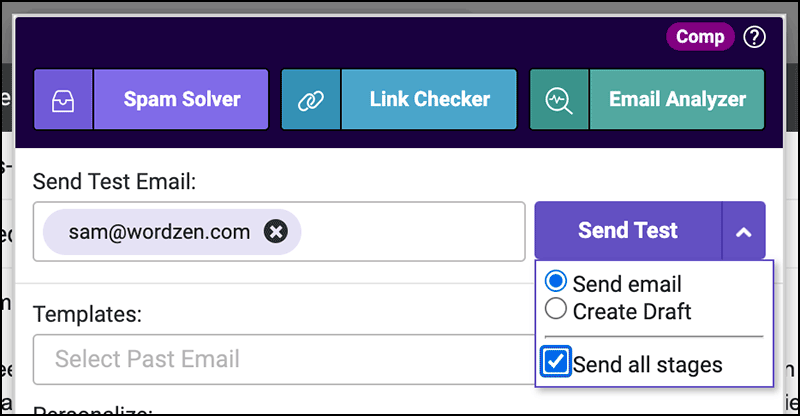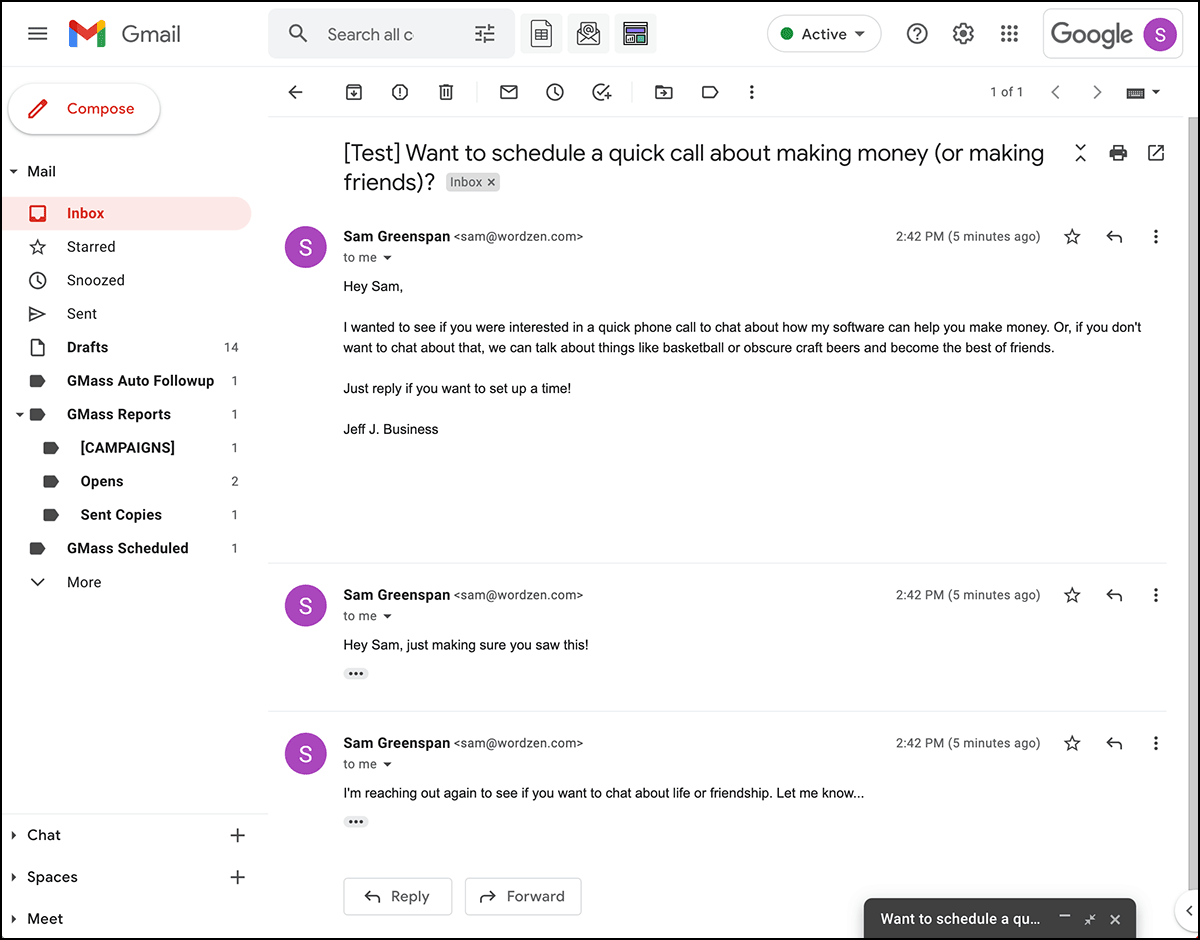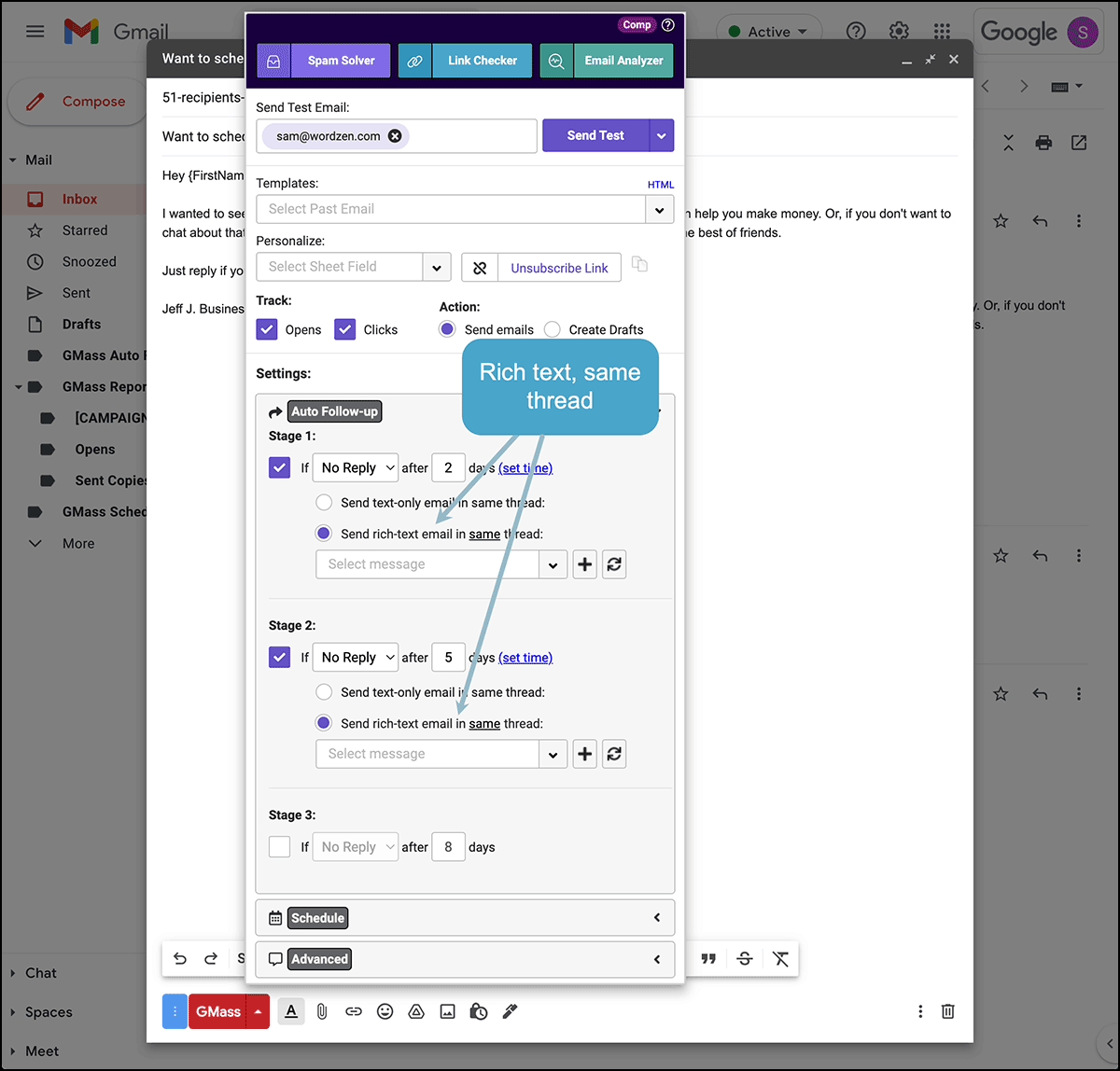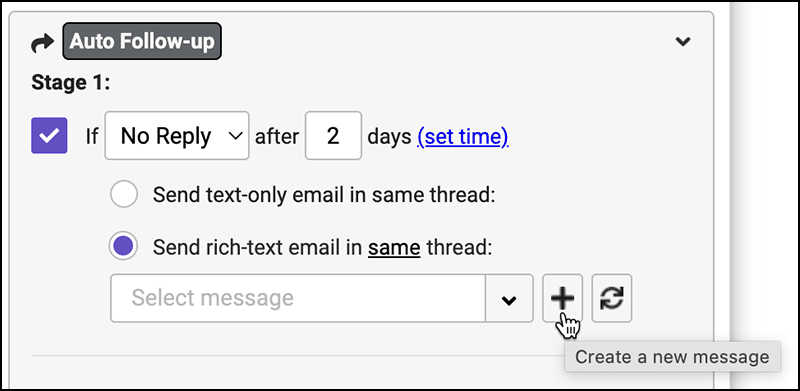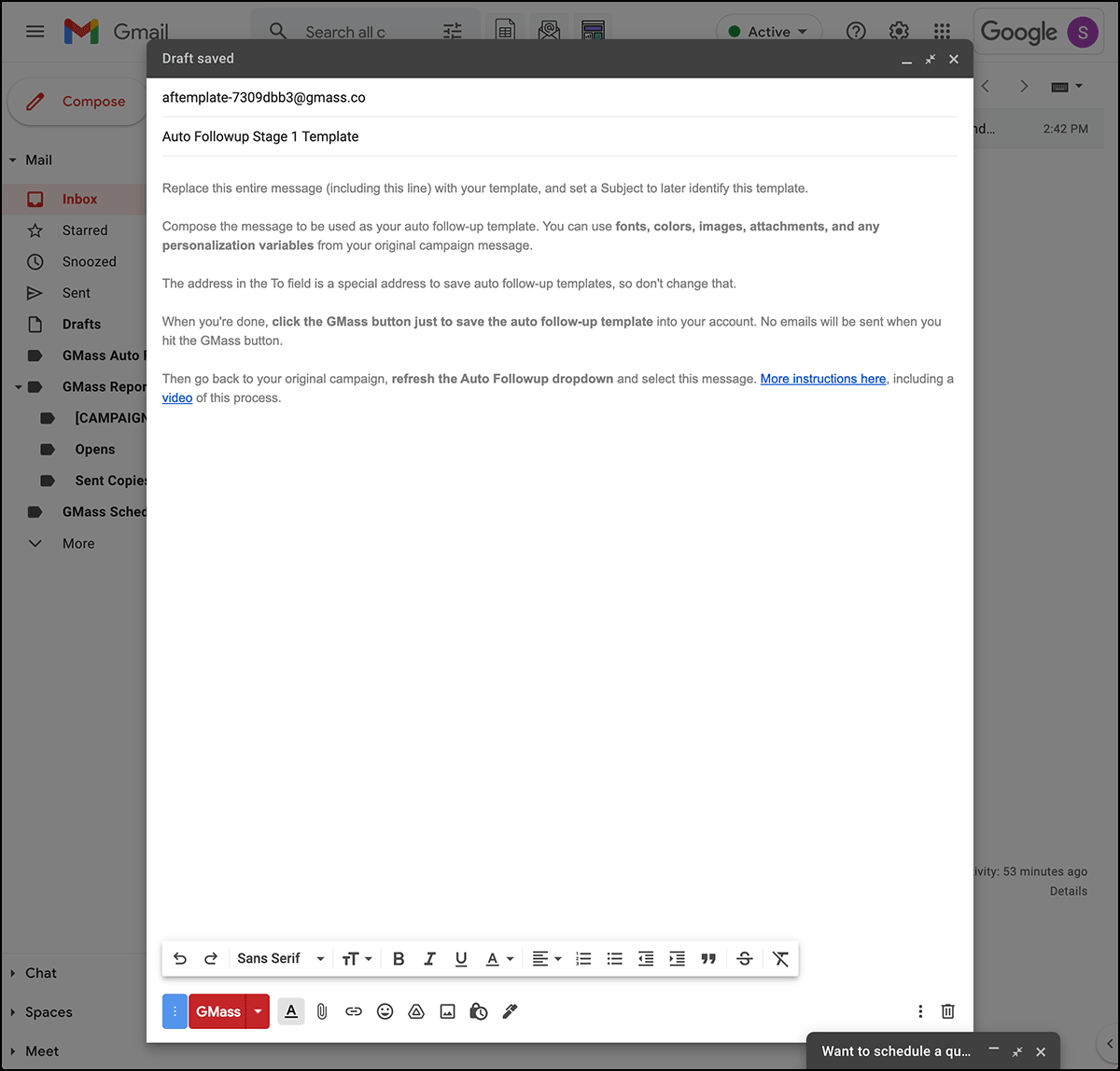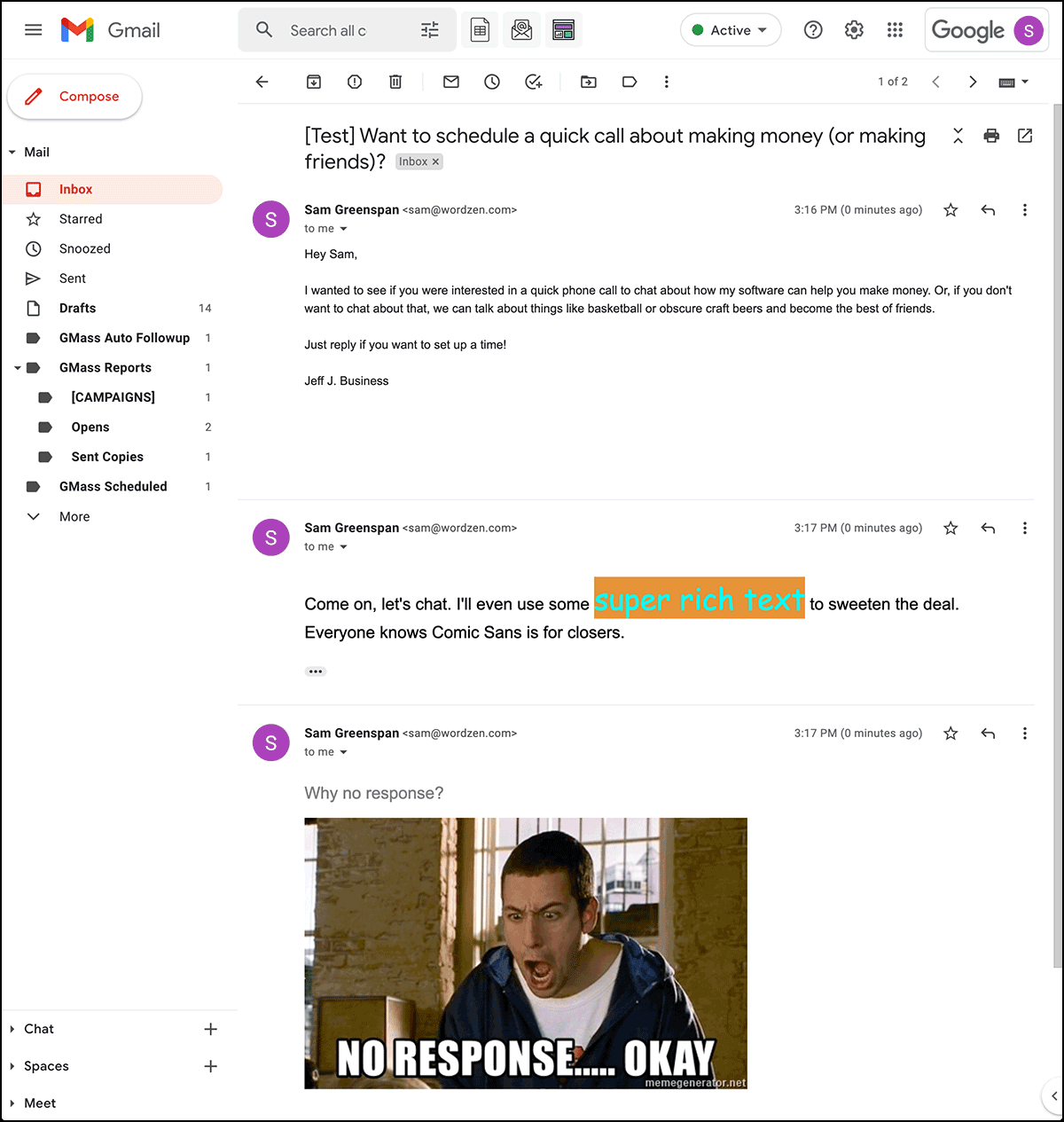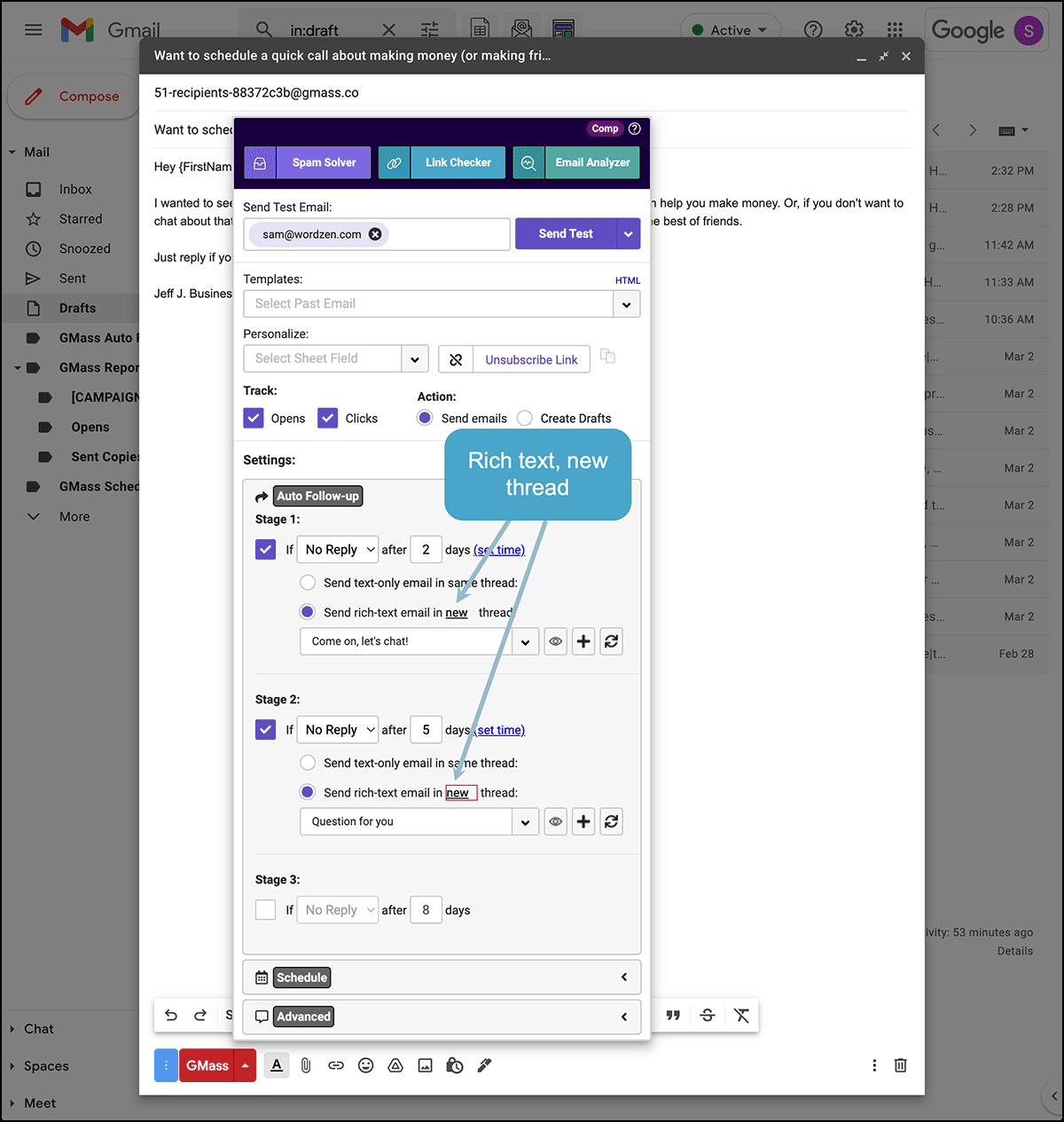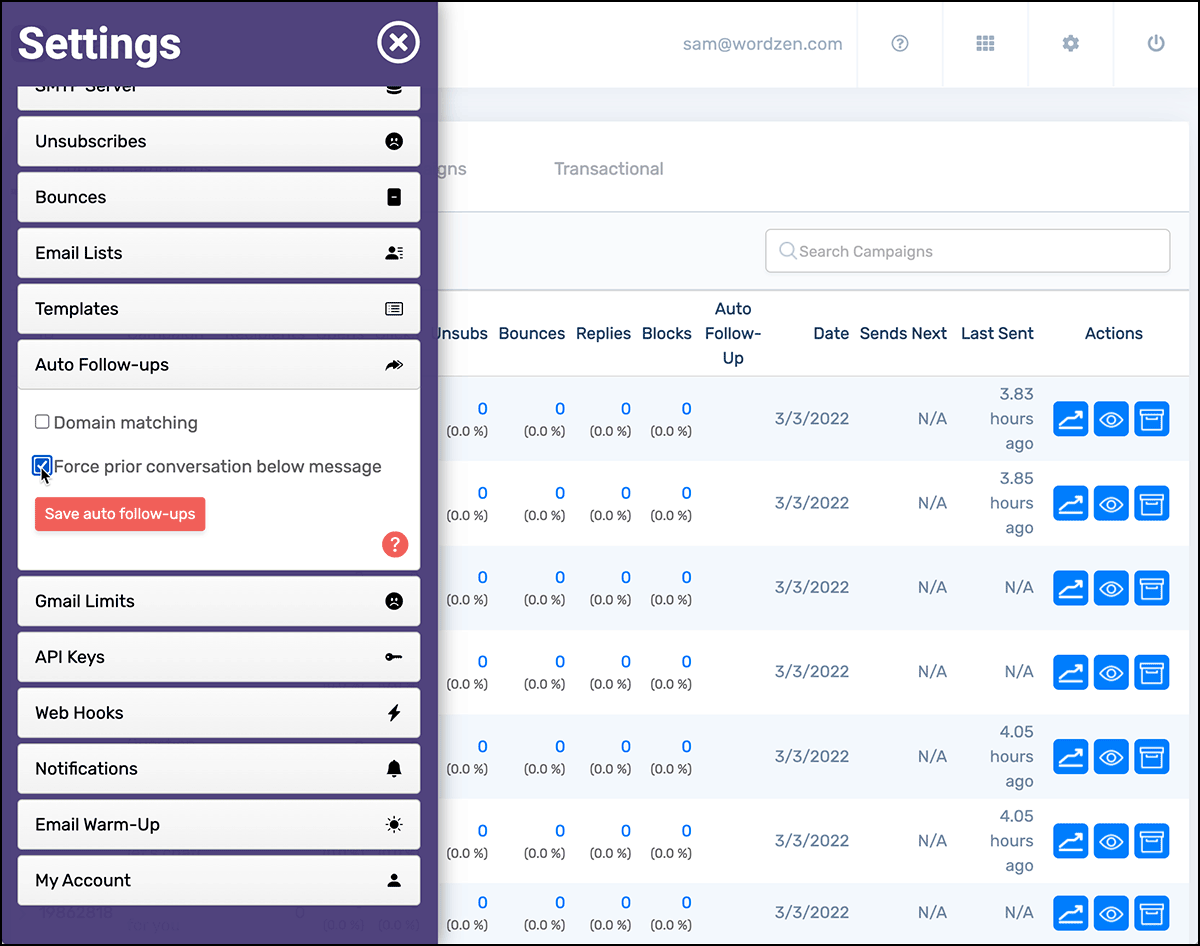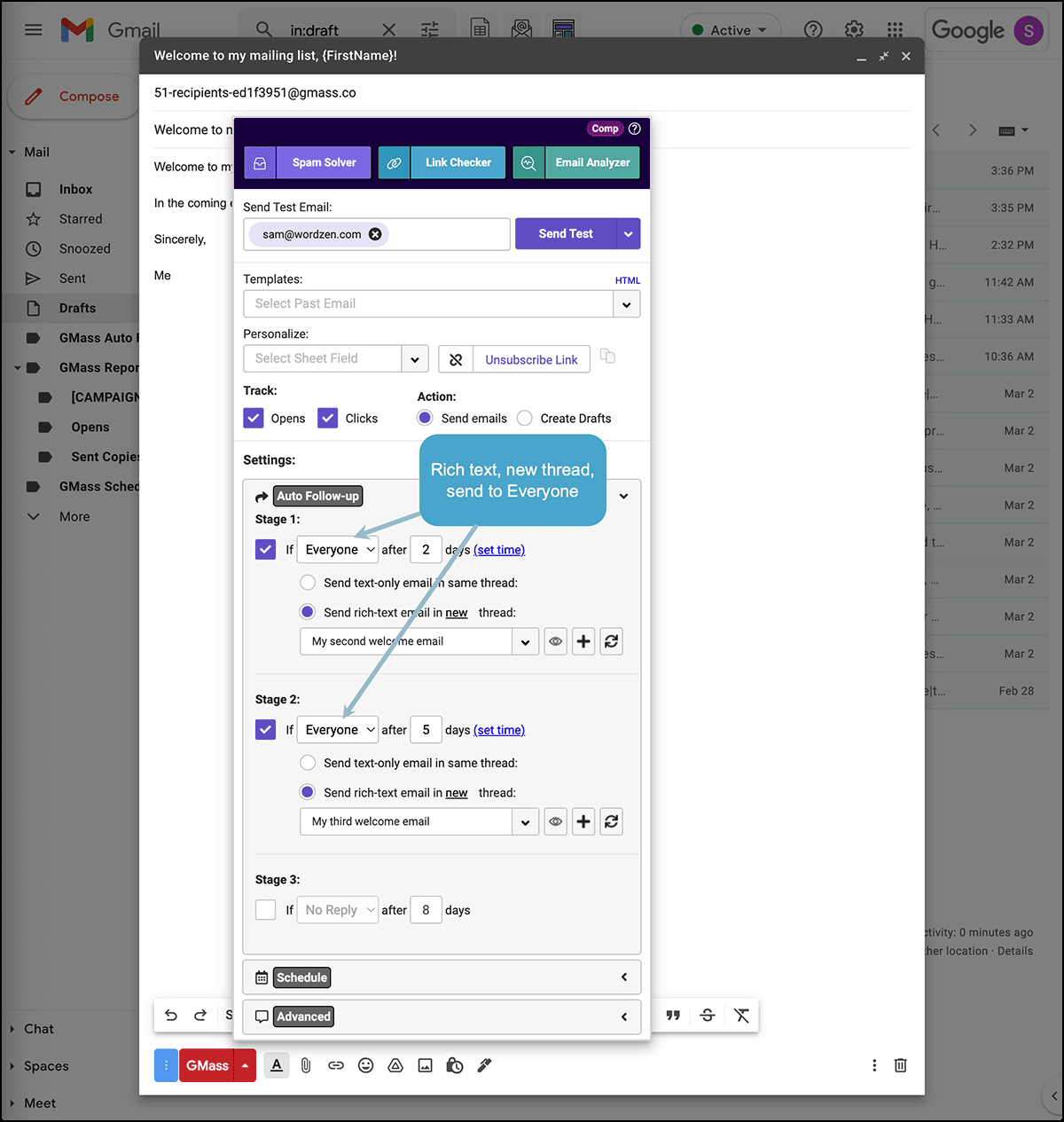Writing an effective email is challenging.
You’ll need to craft a catchy subject line, an engaging body, and a compelling call to action.
But what’s more difficult is personalizing your email copy for each recipient — especially if you have a massive mailing list.
Don’t worry.
That’s where email templates come in.
To help you out, I’ll share 12 proven email copy templates you can start using today.
I’ll also provide four practical tips to help you craft compelling email copy and highlight a powerful email marketing tool you can use to create email copywriting templates at scale.
Further Reading:
- Check out my ultimate guide to email copywriting for everything you need to know.
- Master newsletter copywriting with my practical tips and some handy examples.
This Article Contains:
(Click on links to jump to specific sections)
- 12 High-Converting Email Copy Templates to Start Using Today
- Cold Email Template
- Inbound Lead Email Template
- Newsletter Subscription Email Template
- Follow-Up Email Template
- Webinar Invitation Email Template
- Product Launch Email Template
- Special Offer Email Template
- Value-Addition Email Template
- Customer Welcome Email Template
- Abandoned Cart Email Template
- Networking Email Template
- Media Pitch Email Template
- 4 No-Nonsense Tips to Help You Craft Effective Email Copy
- Make the Most of Email Copy Templates with GMass
Let’s get started.
12 High-Converting Email Copy Templates to Start Using Today
Here are 12 proven, plug-and-play email copy templates designed for different scenarios:
1. Cold Email Template
If you’re sending a cold outreach email to a prospect, you should introduce yourself first and briefly cover what you do in your sales email template. Then, you can mention specific details about the potential customer to demonstrate you did ample research before reaching out.
Subject line: Do you handle [relevant responsibility] at [company], [prospect’s first name]?
Hi [prospect’s first name],
My name is [your name], and I’m a [job title – for example, email marketer or sales rep] at [your company].
We help [prospect’s industry/niche] companies achieve [goal A], [goal B], and [goal C] through [value proposition].
I’m looking to connect with someone who handles [relevant responsibility] at [prospect’s company]. Based on your [social media platform] profile, I figured you’re the right person to talk to. Can we get on a call at [time] on [date] to discuss how we can help you?
If you’re not the right person to approach for this, could you point me in the right direction?
I look forward to hearing from you.
Thanks,
[Your name]
[Your company]
[Your company website]
[Links to your social media handles]
Curious about cold emails?
Check out:
- My ultimate guide to cold email for use cases and best practices.
- 5 cold email templates you can use for any situation.
2. Inbound Lead Email Template
It’s easy for a prospective client to forget about you after receiving your lead magnet.
That’s why it makes sense to send them an email that adds more value to their lives and asks if they’ve got any questions. It lets you stay on their radar without seeming intrusive.
Subject line:Was [lead magnet] helpful for you, [prospect’s first name]?
Hello [prospect’s first name],
You recently downloaded [lead magnet] from [your website].
Did you find the answers you were looking for?
If you found [lead magnet] insightful, here are a few blog posts you may like:
- [Blog post #1]
- [Blog post #2]
- [Blog post #3]
Have any questions you’d like us to answer?
Feel free to schedule a quick call with me here: [calendar URL]
Have a great day,
[Your email signature]
3. Newsletter Subscription Email Template
Once a prospect signs up for your newsletter, you can send them an email confirming their subscription.
In the email, welcome the new subscriber to your community and give them a birdseye view of what your newsletter will cover. Additionally, mention any extra perks they’ll get by staying subscribed.
Subject line:Thanks for subscribing to [newsletter], [subscriber’s first name]!
Hi [subscriber’s first name],
Thank you for subscribing to [newsletter]!
As an official subscriber, you’ll receive weekly emails teaching you the ins and outs of [newsletter topic].
There’s more!
You’ll also get exclusive access to perks like:
- [Example A]
- [Example B]
- [Example C]
Remember to safelist [your email address] or add it to your address book to ensure our messages don’t trigger your spam filter.
Happy to have you as a part of the [X] community!
Best,
[Your email signature]
4. Follow-Up Email Template
There’s a good chance your prospect was busy or didn’t have the budget when you first talked.
You can use this follow-up email template if the prospect has asked you to circle back to them in the future. However, remember to send your follow-up email as a reply to remind the prospect about your old conversation.
Subject line:Re: Is this a good time to talk, [prospect’s first name]?
Hello [prospect’s first name],
Last we talked, you asked me to get back to you in [month] because [reason].
Is this a good time to talk?
If it is, you can book a quick call on my calendar: [meeting scheduler URL]
But if you’re busy and would like to postpone our discussion, just let me know.
In the meantime, here are a few helpful resources you can check out:
- [Resource A]
- [Resource B]
- [Resource C]
I look forward to hearing from you.
Best,
[Your email signature]
Need help writing follow-ups?
Discover:
- How to write a follow-up email (with templates).
- 10 practical sales follow-up email templates you can use right away.
5. Webinar Invitation Email Template
An invite for a webinar around their topic of interest is a great way to intrigue your prospect.
In your webinar invitation email, you can provide details like the topics you’ll cover and who’ll lead the session. Additionally, try to portray how the webinar is especially relevant to your reader and the unique value they can get from attending it.
Subject line:Join our webinar on [topic of interest], [prospect’s first name]!
Hi [prospect’s first name],
We’re co-hosting a webinar with [industry leader] on [topic of interest] on [date] at [time].
During this [X]-hour webinar, we’ll talk about:
- [Key point A]
- [Key point B]
- [Key point C]
Businesses in [prospect’s industry/niche] space will find this webinar useful because we’ll be showing you how to overcome [pain point A] and [pain point B] effortlessly.
Interested?
Reserve your spot here: [webinar URL]
Only [Y] seats are available!
See you there,
[Your email signature]
6. Product Launch Email Template
Sending a product launch email is a great way to build awareness about your product.
You can use this email copy template to showcase your product’s unique benefits and how it’s different from the competition. Moreover, this email template lets recipients pre-order your product.
Subject line:You can pre-order [your product] today, [prospect’s first name]!
Hello [prospect’s first name],
I come bearing exciting news!
[Your product] hits the market on [launch date], and I thought you should be the first to know.
Unlike [competitor product A] and [competitor product B], [your product] offers:
- [Unique benefit #1]
- [Unique benefit #2
- [Unique benefit #3]
Besides, you wouldn’t have to deal with [problem C] and [problem D] anymore.
Want to try it out for yourself?
You can pre-order [your product] on [platform] today!
Do let me know your thoughts on [your product].
Best,
[Your email signature]
7. Special Offer Email Template
A promotional email offering an exclusive discount on your product/service is hard to ignore.
Subscribers who love your product/service will want to leverage this deal to start using your premium offerings. To take things a step further, you can include an expiration date for your offer in the promotional email, prompting your email subscriber to act ASAP.
Subject line: [Prospect’s first name], use this code to get [your product/service] at [X]% off
Hi [prospect’s first name],
To celebrate [occasion], we’re offering a special discount of [X]% on [your product/service].
Use to avail of this offer.
Once you do, you’ll get access to cool features like:
- [Premium feature A]
- [Premium feature B]
- [Premium feature C]
But hurry up!
This offer is valid only till midnight on [date].
If you run into any issues or have any questions, please drop me a line.
I’m happy to help.
Regards,
[Your email signature]
8. Value-Addition Email Template
Email copies that add value to prospects’ lives work because they position you as an expert in your field.
You can add value in the form of a helpful blog post, a relevant case study, or a well-researched whitepaper teaching the email subscriber how to overcome their pain points.
Subject line:[Prospect’s first name], here’s an ebook on [topic of interest]
Hello [prospect’s first name],
I recently saw your post about [pain point] on [platform], and it reminded me of this fantastic ebook my team wrote on [topic of interest].
Our ebook clearly explains how you can overcome:
- [Pain point A]
- [Pain point B]
- [Pain point C]
That’s not all.
You can also explore [bonus piece of content] in the ebook.
And the best part?
It’s free.
Get your copy here: [ebook URL]
Should you have any questions about [topic of interest], shoot me a message. I’ll get back to you ASAP.
Have a good day,
[Your email signature]
9. Customer Welcome Email Template
You can use welcome emails to give customers an overview of what your tool can do for them.
Moreover, welcome emails set the tone for the rest of your interactions with the customer and help manage expectations.
Subject line:Welcome on board [customer’s first name]!
Hi [customer’s first name],
I’m [your name], [your company]’s founder, and I want to personally welcome you to the [your product/service] community!
Our team has worked tirelessly to ensure no one struggles with [pain point].
With [your product/service] by your side, accomplishing [milestone A] and [milestone B] has never been easier.
To show you the ropes, we’ll send regular emails talking about:
- How to use [your product/service]
- How existing customers make the most of [your product/service]
- What you can do when you run into any issues
Here’s a blog post on [topic] to get you started: [URL]
Thanks again for choosing [your product/service],
[Your email signature]
10. Abandoned Cart Email Template
Abandoned cart emails that remind prospects of unpurchased items can help boost your eCommerce store’s sales conversion rate.
You can use the abandoned cart emails to woo the prospects with your products once again and offer them an incentive to buy, like free shipping or a special discount.
Subject line:[Prospect’s first name], you forgot [item]...
Hello [prospect’s first name],
Did you forget to checkout [item]?
Don’t worry.
You can finish the checkout right here: [landing page URL]
Use this during checkout to get free shipping on your purchase.
If you run into any issues or have questions about your purchase, send us an email or call us at [phone number]. Our sales rep will get things sorted in no time!
Best,
[Your email signature]
11. Networking Email Template
This networking email template lets you cement a relationship you made with a prospect during a networking event. Using this email copy template, you can build rapport and slowly get the reader interested in your offerings.
Subject line: Nice talking to you, [prospect’s first name]
Hi [prospect’s first name],
It was great meeting you at [location] for [event]. I’m glad we got to talk about [topic of interest]. Moreover, it was fascinating to hear about your [initiative] at [prospect’s company].
We’re organizing a virtual event on [topic of interest] on [date].
It features:
- [Unique selling point A]
- [Unique selling point B]
- [Unique selling point C]
Would you be interested in joining?
You can register here: [event registration URL]
I look forward to catching up with you.
Regards,
[Your email signature]
12. Media Pitch Email Template
Press mentions are an excellent strategy for building your credibility.
One smart way to get a press mention is to cold email a journalist who covers news related to your industry or niche. You can entice the publication into giving you a feature by mentioning a study your company did and its exciting discoveries.
Subject line:Loved your [publication] on [topic of interest], [prospect’s first name]!
Hello [prospect’s first name],
I’m [your name], a [job title] at [your company].
I came across your [publication] on [topic of interest] and found your angle very interesting. I particularly liked your take on [specific aspect].
If you’re interested in exploring [topic of interest] from a business perspective, I’d love to pitch in. [Your company] recently did a study on [topic of interest] around small businesses in the [industry] niche.
We found:
- [Result #1]
- [Result #2]
- [Result #3]
Please let me know if you’d like more details on this study.
I’d love to tell you more!
Best,
[Your email signature]
Now that we’ve gone over some ready-made templates you can reuse, I’ll share some actionable tips to help you craft great email copies:
4 No-Nonsense Tips to Help You Craft Effective Email Copy
Here are four proven tips an email marketer can follow to ace email copywriting:
1. Write Short, Catchy Subject Lines
Your subject line is one of the first things the recipient notices about your email.
It can make or break your email open rate — about 47% of email recipients open an email based on the subject line.
That’s why your email subject line needs to be:
- Concise: since 50% of users open emails on their mobile devices, try to limit your subject line’s length to 25-30 characters.
- Catchy: mentioning a surprising stat, asking a relatable question, or promising a solution to a pain point in your subject line can make it stand out.
- Spam-free: avoid using spam trigger words like “Earn $”, “100% free”, “No catch”, “Guarantee”, etc., in your email subject line.
For more information, check out:
- 43 cold email subject lines that increase your open rate.
- 20 sample follow-up email subject lines to improve responses.
2. Make Your Email Body Copy Easy to Read
The subject line may get your email opened.
But it’s up to your email body copy to capture the reader’s attention, engage them, and lead them to your call to action.
That’s why your email body copy should:
- Be brief: a potential customer doesn’t have all day to read your email, so it’s crucial to convey your message quickly, in as few words as possible.
- Avoid jargon: jargon takes away from your email body’s clarity and may confuse your reader.
- Be easy to read: break up your email body copy with whitespaces to make the content more scannable.
3. Ensure that Your CTA Is Clear and Impossible to Ignore
Once a potential customer finishes reading your body copy, use your call to action (CTA) to tell them what to do next.
Otherwise, the recipient may struggle to figure out the next steps.
When creating your CTA, remember to:
- Stick to one CTA: too many CTAs can overwhelm your reader, and they take no action.
- Make it stand out: use a button for your CTA and add whitespaces around it so that your CTA is easy-to-find.
- Use action words: begin your CTA with a word like “download”, “contact”, “sign up”, etc., that encourage readers to act.
4. Personalize Your Email Copy to Increase Engagement
Your recipients don’t need another generic email from you.
They’ve already got plenty in their inbox.
Instead, you need to send them personalized emails that show you’ve done your research and genuinely want to help them out.
For this, email marketers can:
- Mention the recipient’s name/company name in the subject line.
- Talk about their unique pain points in the sales email template’s body copy.
- Add a social proof example (like a testimonial) that resonates with the audience.
- Share relevant content or research that’ll make their lives easier, and more.
Next, I’ll introduce an advanced yet easy-to-use email marketing tool that can help you power up your email copywriting efforts:
Make the Most of Your Email Copy Templates with GMass
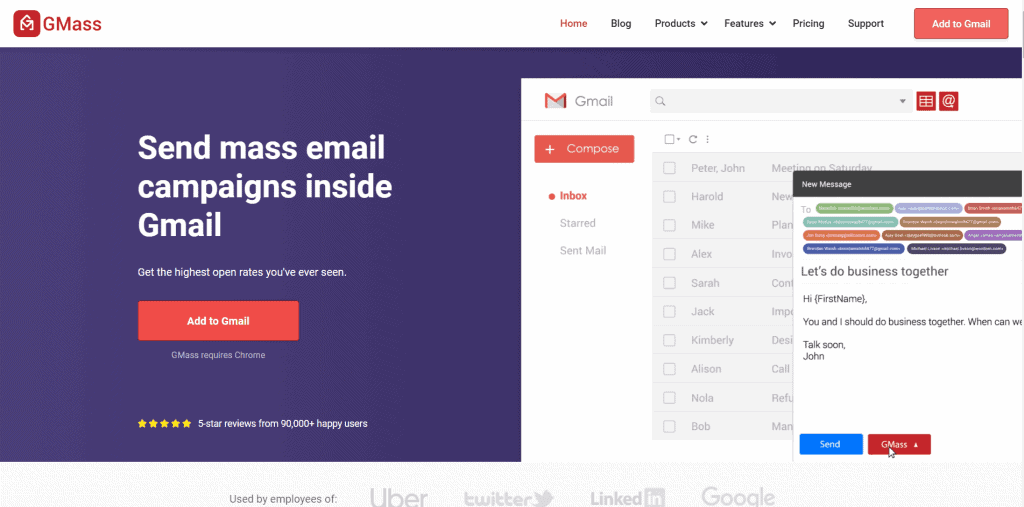
GMass is a powerful email marketing and marketing automation tool that helps you scale up your email copywriting efforts.
Its ease of use makes GMass the perfect email outreach software for marketers, salespeople, solopreneurs, owners of small businesses, and more. GMass is also a popular solution used by employees in social media powerhouses like LinkedIn and Twitter.
With GMass, you can:
- Save your best email copies as templates to reuse in a future email campaign.
- Automatically personalize your cold outreach emails at scale, including paragraphs, links, images, and attachments.
- A/B test your sales email copy to identify the version that brings the most conversions.
- Schedule your email marketing campaign to reach your subscribers, existing customers, or prospects at optimal times.
- Build a targeted email list with just a few clicks from your Gmail search results.
- Use campaign reports to analyze metrics like open rate, response rate, click-through rate, etc., for your sales email campaign.
To use GMass, simply download the Chrome extension and sign up for a free trial with your Gmail or Google Workspace account.
Final Thoughts
Email copywriting can be time-consuming and demanding.
Fortunately, there’s a way out: create email copy templates that you can easily personalize, tweak, and reuse in your future campaigns.
You can use the templates covered above or create your own by following the tips mentioned.
However, creating your marketing or sales email templates is only part of the process.
You also need a powerful email marketing automation tool like GMass to manage your email campaigns at scale.
Why not download the GMass Chrome extension for free and step up your email copy game today?
Only GMass packs every email app into one tool — and brings it all into Gmail for you. Better emails. Tons of power. Easy to use.
TRY GMASS FOR FREE
Download Chrome extension - 30 second install!
No credit card required
Ajay is the founder of GMass and has been developing email sending software for 20 years.


